Ultimate 7-day Costa Rica Itinerary
Traveling in Costa Rica is a dream for nature lovers. It’s relatively easy to get around, especially when renting a car. However, the local buses are a good option if you’re traveling on a budget. Here’s how to spend 7 days in Costa Rica.
Looking for a long itinerary? Read our 2-week Costa Rica itinerary or 3-week Costa Rica itinerary.
Day 1: San Jose to La Fortuna
Your trip to Costa Rica most likely starts in San Jose, the country’s capital city and one of the only two international airports. San Jose itself isn’t worth visiting if you only have 7 days in Costa Rica. Therefore, it’s best to rent a car, book a shuttle or tour, or take the local bus directly to La Fortuna.
How to Get From San Jose to La Fortuna
By car:
San Jose is around 3 hours away from La Fortuna. There is a well-paved road between the destinations, so you do not need a 4×4 car for this entire itinerary if you rent a car. However, we recommend renting a slightly higher car from the ground to avoid any pothole damage.
We recommend to rent a car in Costa Rica through Sunny Cars with free cancellation and insurance included. Book your rental car here.
By bus or shuttle:
The public bus to La Fortuna leaves once a day at 8:40 AM from downtown San Jose and arrives at 1 PM, costing 3.000 CRC (About 5 USD). If that time doesn’t work for you, you could also consider booking a shuttle directly from the airport.
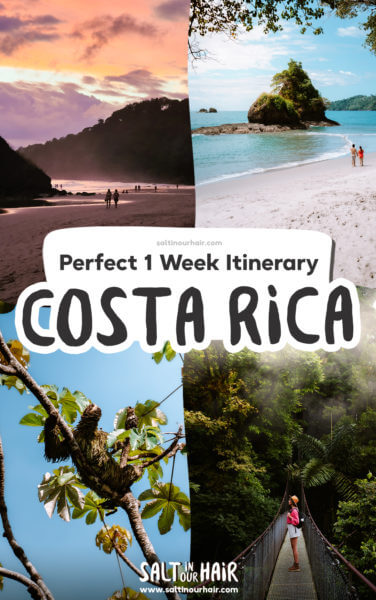
Where to Stay in La Fortuna
La Fortuna has many excellent accommodations that fit any budget. However, you’ll find the best accommodations and campsites just outside La Fortuna if you have your transport. If hot springs play a big part in your Costa Rica itinerary, consider staying in a hotel with hot springs that are also included in the nightly price. (Here are all your hotel options)
Day 2: Hot Springs and Volcano Arenal
Welcome to La Fortuna, a town famous for its incredible surrounding nature and Volcano Arenal. In the morning, head out to the Arenal National Park for the hike over the unique Arenal 1968 trail close to the volcano. Also, it’s a great two-hour walk that takes you to a viewpoint for a good view of the volcano. (read more about it)
Did you know: Costa Rica has over 30 protected national parks!
After that hike, relax at the natural hot springs of La Fortuna, that are heated to a comfortable 35-38 degrees by the Volcano Arenal. Most of these springs are owned by hotels, so you have to pay for a day pass or stay at the hotel to access them. We highly recommend Tabacon Hot Springs. However, there is also a free and public hot spring for you to visit.
Day 3: La Fortuna and Driving to Monteverde
Make your way to the next town named Monteverde. However, before that, stop at the Mistico Arenal Hanging Bridges. These unique hanging bridges are suspended among the rainforest canopy, which means you can spot amazing animals like sloths, tarantulas, and frogs. Walk across bridges, and look down onto the stunning forest, rivers, and also a waterfall from an incredible height of 45 meters (148 feet)!
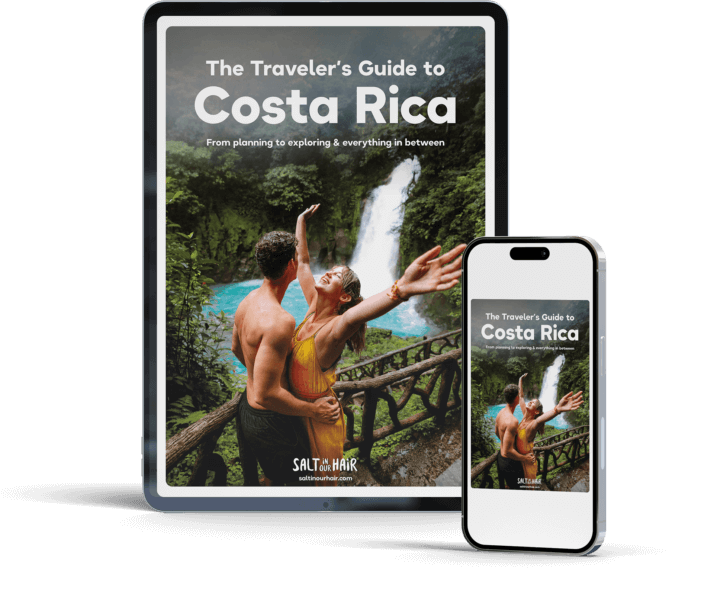
How to Get From La Fortuna to Monteverde
By car:
There is a national park between La Fortuna and Monteverde, so although the villages are close, you have to drive around Lake Arenal to get to Monteverde. Luckily, it’s a stunning drive of about 3 hours. The roads around the lake to Santa Elena (Monteverde town) are all well-paved, but it’s recommended to have a slightly more powerful car for the steep hills and to have some clearance off the ground to avoid any damage from potholes (no 4×4 needed to visit Monteverde).
Lunch tip: We had the best Italian food in Costa Rica at Los Platillos Voladores. It is in Nuevo Arenal, which is on the way to Monteverde.
By bus or shuttle:
Buses leave from La Fortuna to Monteverde, but they take around 7-8 hours. Additionally, you won’t be able to visit Mistisco when traveling by bus. Alternatively, get a shared shuttle van.
Where to Stay in Monteverde
Monteverde offers numerous accommodation options, from cabins in the forest to hotels in Santa Elena. (See all your hotels options here)
Day 4: Monteverde
Monteverde is an ecologically diverse mountain area famous for its cloud forest. It’s also a protected area where you can easily spot hummingbirds, toucans, and other tropical birds. Enjoy the fresh mountain air and experience fast-changing weather with incredible fluctuating temperatures.
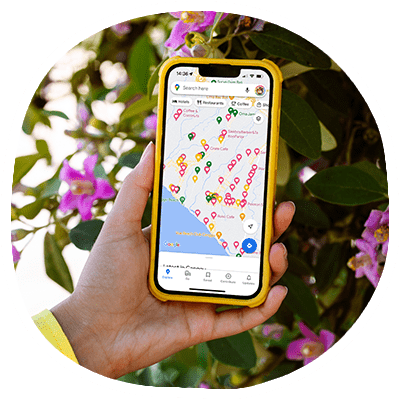
During your time in Monteverde, plan a hike in the Monteverde Cloud Forest and a coffee or tea at the Hummingbird Cafe. Book a guided tour if you want to learn more about the flora and fauna you’ll discover during your visit. When night falls, join a night tour to spot animals that only come out when it’s dark.
Day 5: Drive to Manuel Antonio
From the cloud forest in Monteverde, make your way down to the beaches of Manuel Antonio. Manuel Antonio is a coastal village surrounded by lush jungle and pristine white sand beaches. However, it’s most famous for being home to one of the world’s most beautiful national parks: Manuel Antonio National Park. Here you can spot a vast array of wildlife! If you want to learn more about the location and animals, book a tour with a local guide.
If you arrive in Manuel Antonio around midday, either relax at the beach, Playa Espadilla Norte, or opt for a Chocolate & Coffee tour.
Get to know everything about Manuel Antonio.
How to Get From Monteverde to Manuel Antonio
By car:
It is an easy 4-hour drive from Monteverde to Manuel Antonio and the longest drive on this 7-day Costa Rica itinerary. However, all the roads are good, and you will not need a 4×4 car. About halfway, make a quick stop at the famous Crocodile Bridge, where you have a chance of spotting crocodiles. Please do not buy any meat from the sellers because feeding animals is a bad example of wildlife tourism. Besides: you are not allowed to feed animals in Costa Rica by law.
Lunch tip: Grab a quick but tasty lunch at El Jardin, about halfway through your drive.
By bus or shuttle
Unfortunately, there’s no direct bus from Monteverde to Manuel Antonio. Instead, take the Santa Elena (Manuel Antonio) to Puntarenas bus and change bus to Quepos. Once in Quepos, change buses to Manuel Antonio. The total journey will take about 6-8 hours and should cost about 10 USD.
Alternatively, book a direct shuttle between both destinations. (See the shuttle options here)
Where to Stay in Manuel Antonio
The closer your accommodation is to Manuel Antonio National Park, the more expensive it gets. Therefore, we recommend staying between Quepos and the national park if you have your own transport. (See all your hotel options here)
Day 6: Manuel Antonio National Park
Close off the 7-day Costa Rica itinerary at the wild and tropical beaches of Manuel Antonio National Park. The park is one of the world’s best national parks, famed for its many animals and biodiversity. Plus, there are lots of beautiful trails through the park. Expect to see animals like sloths, snakes, monkeys, and so much more.
The trail ends at the gorgeous beaches of Manuel Antonio Beach and Espadilla South Beach, which are also part of the protected area. Spend the rest of the day relaxing and swimming at the beach or spotting wild, colorful iguanas who are always around the beach.
Day 7: Drive back to San Jose
All great adventures come to an end, and unfortunately, this is the last day of your 7 days in Costa Rica. Make your way back to SJO airport, or if you have a flight late in the day, you could visit one more waterfall (like La Paz). If you need a hotel close to the airport, stay at Alajuela instead of San Jose.
How to Visit Costa Rica in 7 days
Getting to Costa Rica
There are two international airports in Costa Rica. San Jose International Airport is where the majority of the flights arrive. The immigration lines are always long here so keep that in mind. The second option is Roberts International Airport in Liberia. If you fly to Liberia instead of San Jose, you can still do this 7-day Costa Rica Itinerary.
Note: To enter Costa Rica, you need an onward ticket (proof of leaving the country).
You can also cross borders from Panama or Nicaragua if you’re already in one of these countries.
Getting Around Costa Rica
By Car
The easiest way, by far, to get around Costa Rica is with a rental car. In addition, you get the freedom to stop anywhere you like, at your own pace, which gives you the flexibility to complete your 7-day itinerary in Costa Rica. It’s good to know that rental car prices double in the high season.
Driving in Costa Rica
Unlike stories you might have heard or read before, most of the roads in Costa Rica are well-paved and in good condition. The only unpaved road you might encounter on this itinerary is if you take the wrong road from La Fortuna to Monteverde. Because of this, always use the Waze app in Costa Rica to find the right roads.
Travel Insurance
Don't forget a travel insurance for your Costa Rica trip! Heymondo covers medical emergencies, theft, delays, cancellations, lost luggage, and more, with 24/7 worldwide assistance and medical chat. As a Salt in our Hair reader, we've got you 5% off! Check Heymondo here
Parking locals may walk up to you and ask for a very small payment to watch your car. This is a good service in general except when they try to overcharge you.
Do I need a 4×4 in Costa Rica?
You no longer need a 4×4 car to get to Costa Rica if you follow the main roads. However, to avoid any pothole damage, we recommend renting a car with some clearance from the ground.
We recommend to rent a car in Costa Rica through Sunny Cars with free cancellation and insurance included. Book your rental car here.
By Jeep With Tent or Campervan
For an even more extraordinary adventure in Costa Rica, rent a 4×4 jeep in Costa Rica, so you literally sleep and go anywhere you like. This gives you the option to drive in national parks and cross rivers in Corcovado and Guanacaste areas. Although it might seem out of your budget, you shouldn’t forget that this is your accommodation, transport, and kitchen all in one. Because of this, your trip might end up cheaper!
By Bus
Traveling by local buses in Costa Rica is the cheapest way to get around. They travel to pretty much anywhere in the country. However, it will take quite a bit longer. This is because the bus routes avoid highways and make stops instead of traveling direct. The bus timetables also often change, so check times in advance.
By Shuttle
Shuttles (12-seaters vans) are convenient to travel door to door in Costa Rica. Interbus is the largest shuttle operator and drives between all major destinations. These shuttles can be booked in advance, and it is recommended to do so, especially during the high season. We experienced it ourselves, leaving us with no other option than to take an expensive taxi ride.
Our Favorite Accommodations
There are many options when it comes to accommodation in Costa Rica. For instance, a jungle bungalow, beach resort, boutique hotel, or lively hostel. Below are our favorites per destination.
- San Jose: Casa 69, Grano de Oro Hotel, and Escalante Hostel
- La Fortuna: Casa Luna, Sangregado Lodge, and Poshpacker Hostel
- Monteverde: Los Pinos Lodge, Chira Glamping, and Outbox Hostel
- Manuel Antonio: The Falls Hotel, and Teva Hostel
How Much Does 7 days in Costa Rica Cost?
Costa Rica contains 5% of the world’s biodiversity, being one of the world’s biodiverse countries. But it is also known as ‘Switzerland of Central America’ because of the high prices that come with the country’s beauty.
Some recommendations:
Good ATMs in Costa Rica are Banco Nacional, BCR, Citibank, and Scotiabank to withdraw cash.
The best sim card providers in the country are Movistar, Claro, and Kolbi. In our experience, Movistar has the most solid connection throughout the country. Costs for this are 10.000 Colones for 5GB. (± 15 USD) You can also purchase an (e)SIM online here.
Best Time to visit Costa Rica for 7 days
The best time to travel to Costa Rica is from mid-December to April. It is the high season with plenty of sunshine and occasionally a short shower every few days. The average temperature in Costa Rica range between 15 and 30 degrees. This is also the busiest and most expensive time to visit Costa Rica.
The end of April to the end of November is the rainy season, with the most rain in October. However, don’t worry as it doesn’t rain the entire day, more like a few times a day. In addition, this period is much more affordable, and you might save a third of your total budget by traveling out of the high season.
Tip: In this 7-day Costa Rica itinerary, we did not include the country’s Caribbean side. Please note that the good season there is slightly different.
Do I Need a Visa for 7 days in Costa Rica?
Most passport holders do not require a visa to enter Costa Rica. However, a valid passport and a ticket as proof that you will exit Costa Rica within 90 days are required.
Is it Safe in Costa Rica?
Yes, generally, Costa Rica is very safe for tourists traveling around in the country. It is also the country in Central America with the lowest violent crimes. Like most countries in Latin America, it has problems with drug trafficking, poverty, and pickpockets, but most tourists will never come into contact with this.
Fun fact: Costa Rica has had no army since 1948 because the people say it should resolve conflicts at the negotiating table.
Travel Insurance for Costa Rica
Even if you’re traveling in Costa Rica for 7 days, we recommend purchasing single-trip travel insurance. Even though the country itself is safe, something unforeseen might happen—for example, an injury after a hike or surfing or a canceled flight.
Travel Insurance
Don't forget a travel insurance for your Costa Rica trip! Heymondo covers medical emergencies, theft, delays, cancellations, lost luggage, and more, with 24/7 worldwide assistance and medical chat. As a Salt in our Hair reader, we've got you 5% off! Check Heymondo here
What to Pack for a 7-day Costa Rica Itinerary?
A trip to Costa Rica is one with many different climates. For example, the weather can change from a sunny 30 degrees to 18 degrees with rain within a few hours. Because of this, taking layers and quick-dry clothes is necessary.
Costa Rica Packing List
- Take layers – Layers of clothing are essential to add or remove items when the temperature changes.
- Quick-dry clothing – You can be almost certain to have a little bit of rain during your trip to Costa Rica. Take clothing made of fabrics that dry quickly because items take very long to dry due to the humidity.
- Microfiber towel – Similar to quick-dry clothing, it’s extremely useful to take microfiber towels as they dry much faster and are incredibly lightweight.
- Universal travel plug – Make sure your items can be charged by the Costa Rican power sockets by bringing a universal plug.
- Waterproof backpack – Keep your valuables dry in a waterproof backpack or a rain cover that comes with your bag.
- Raincoat – The final item for rain is a waterproof jacket/raincoat. Some of them can also be easily folded into a package that you can take anywhere.
- Hat – Luckily, there are also a lot of sunny moments. For that, take a hat/cap to protecth against the sun for the hikes you will be doing.
- Long socks & trousers – For some hikes, night walks, or evenings outside, you might also want to take long socks and trousers to cover your legs and prevent being bitten by mosquitos.
- Good footwear – Good walking shoes/sneakers/sandals is an absolute must. Hikes can be somewhat challenging with muddy or rocky paths. It’s not smart to wear flip-flops here.
- Earplugs – Your nights can be disturbed by animal sounds, music, or when camping in Costa Rica, the sound of the waves. Earplugs save your night’s rest.
- Camera – Capture memories of your 7 days in Costa Rica with a waterproof camera like a GoPro, or get good protection gear for your camera so you won’t have problems during an unexpected shower.
- Power bank – For the long hikes, power outages, or moments in the jungle, it’s helpful to have a power bank to recharge your phone. (Get one here)
Packing Sustainable Items
- Insect repellent – Bring an insect repellent but get a non-toxic product, so it doesn’t harm nature or animals.
- Sunscreen – An obvious addition to that is also sunscreen. We recommend a product without toxic ingredients, so it doesn’t harm the environment. (Read about alternative sunscreens here)
- Refillable water bottle – Water is drinkable from the tap in almost all of Costa Rica except secluded locations like Tortuguero. No need to buy plastic bottles, refill instead!
- Stainless steel straw – Coconuts are available everywhere in Costa Rica. Carry a stainless steel straw with you and avoid plastic or single-use straws. Pro-tip: With stainless steel, you can scrape out the delicious inside of the coconut too.
- Reusable bag – Don’t take plastic bags when purchasing fruits or other items. Instead, carry your own!
By purchasing through our links, you support us at no additional cost.
Thank you for your support. ♥️
- Find Hotels via Booking.com
- Find a Rental Car via Sunny Cars
- Find Flights to Costa Rica via Skyscanner
- Get a Travel Insurance via Heymondo
- Book Tours & Attractions via GetYourGuide
- Book a Bus/Train/Transfer via 12Go
Looking for more travel information? Plan a chat with us for personalised travel advice or get an answer from the Salt in our Hair Travel Community on Facebook.

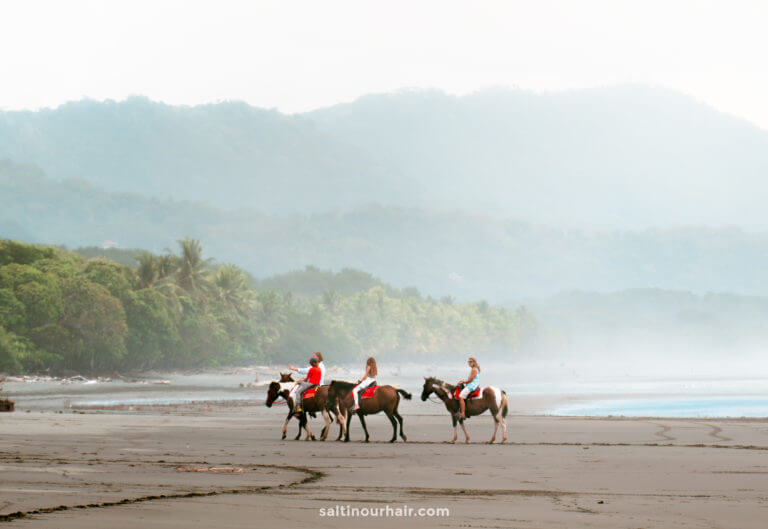
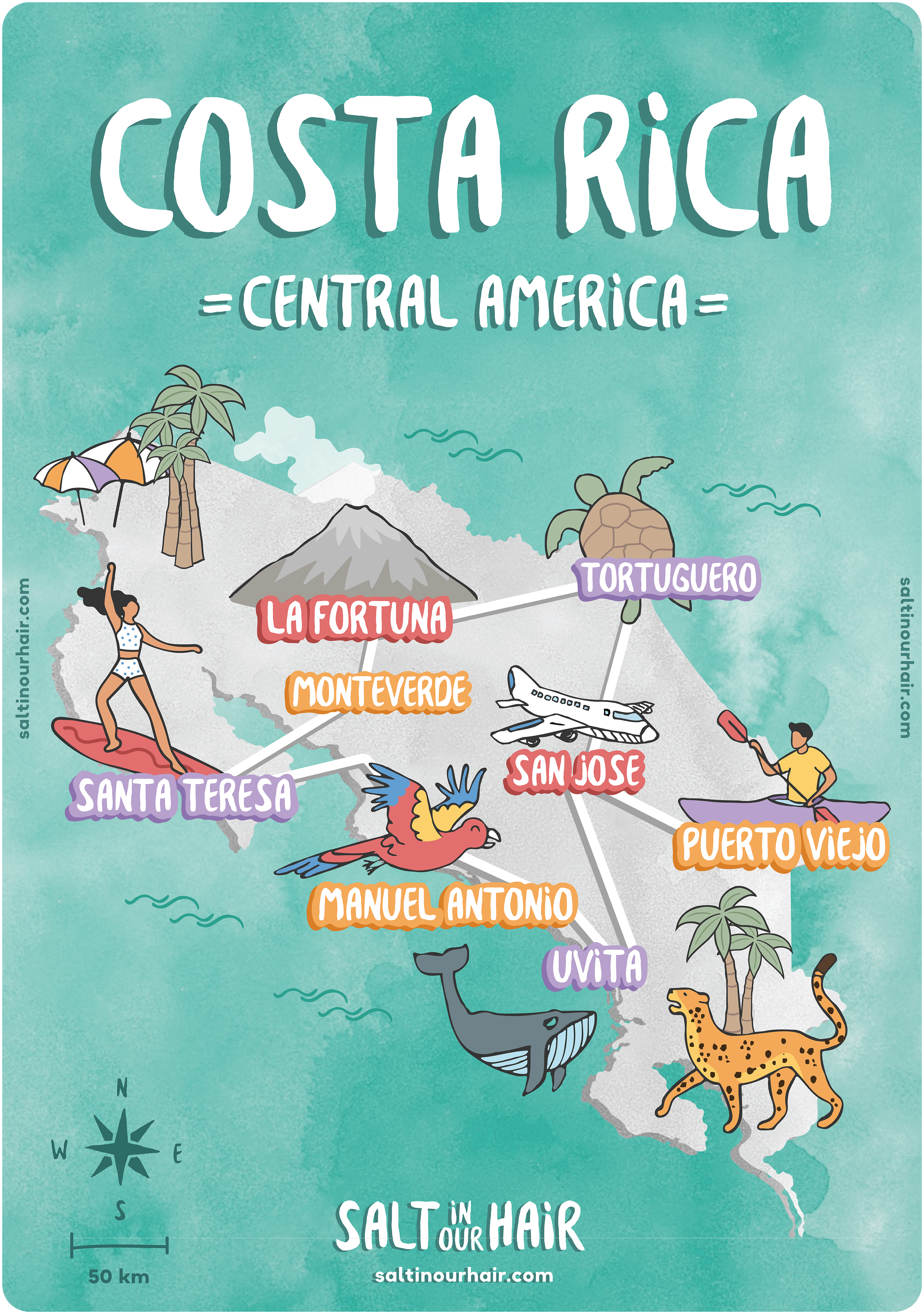
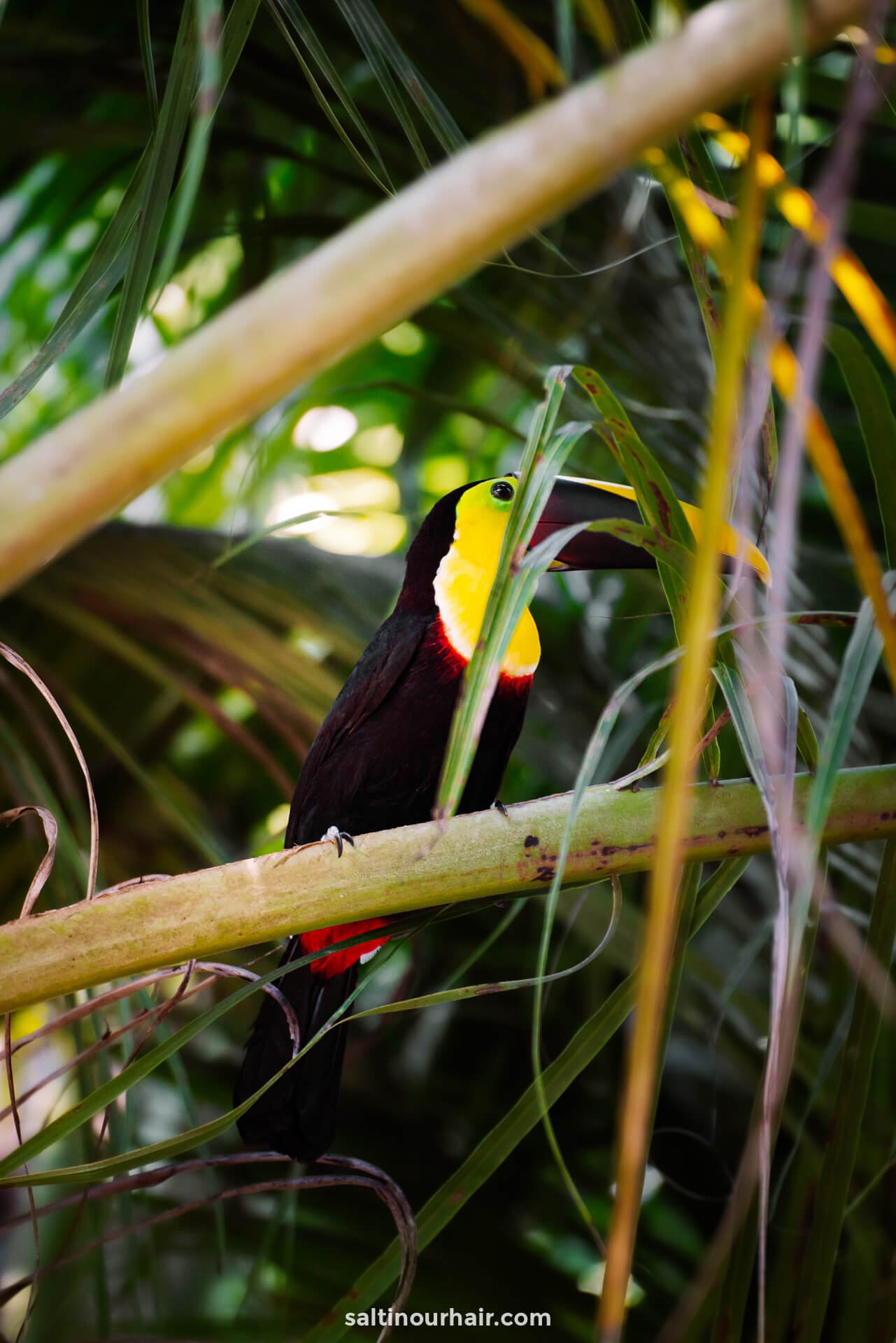
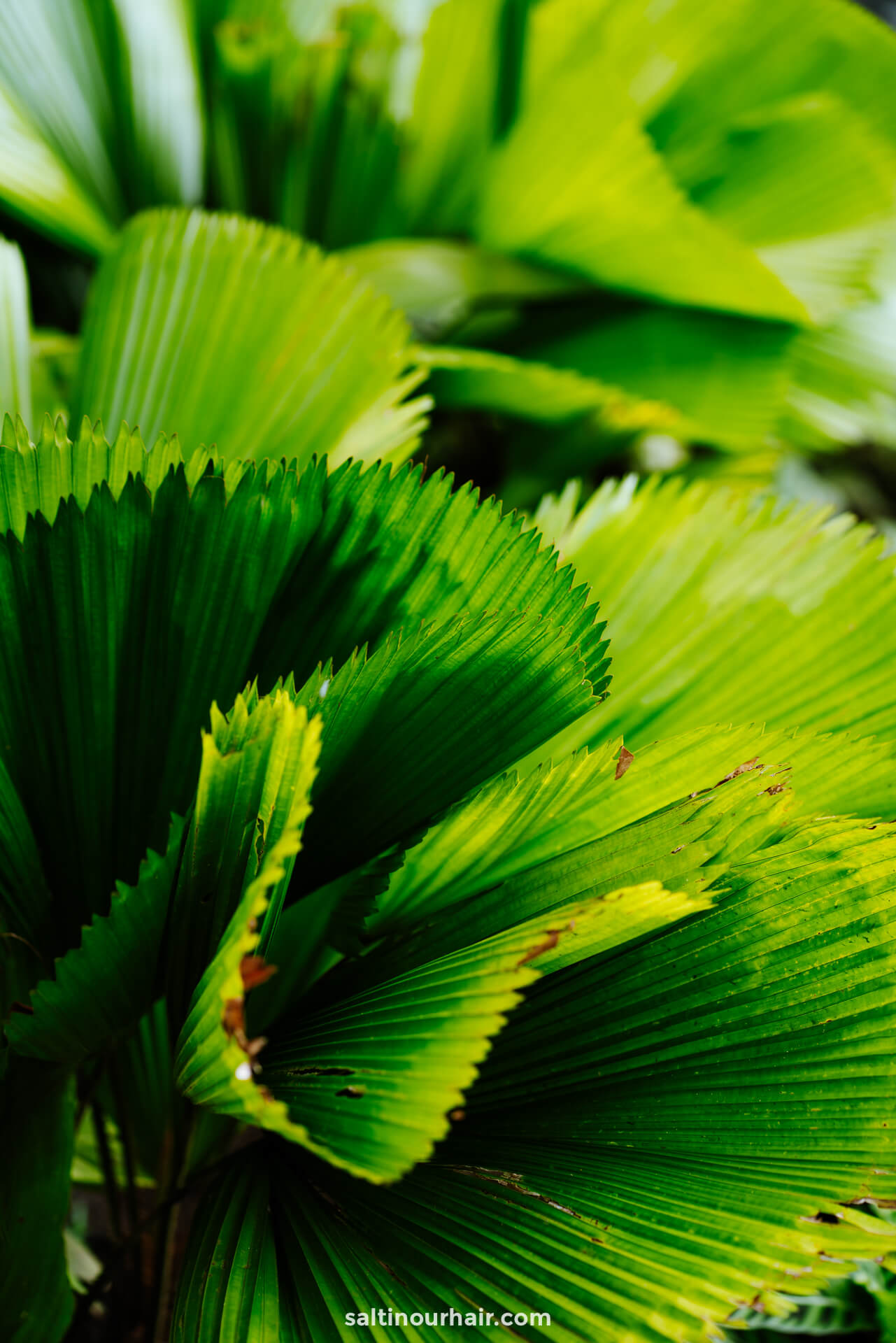
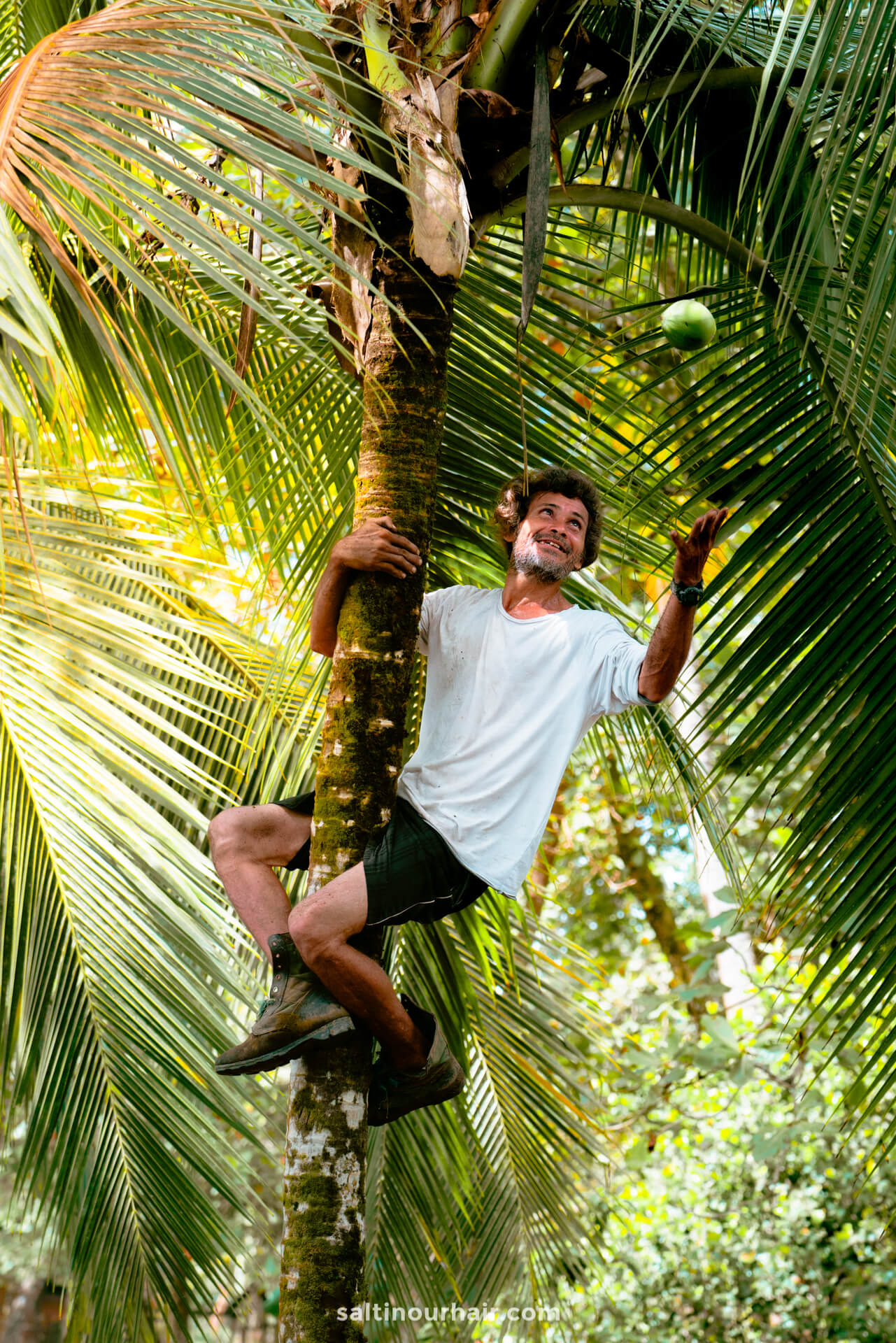
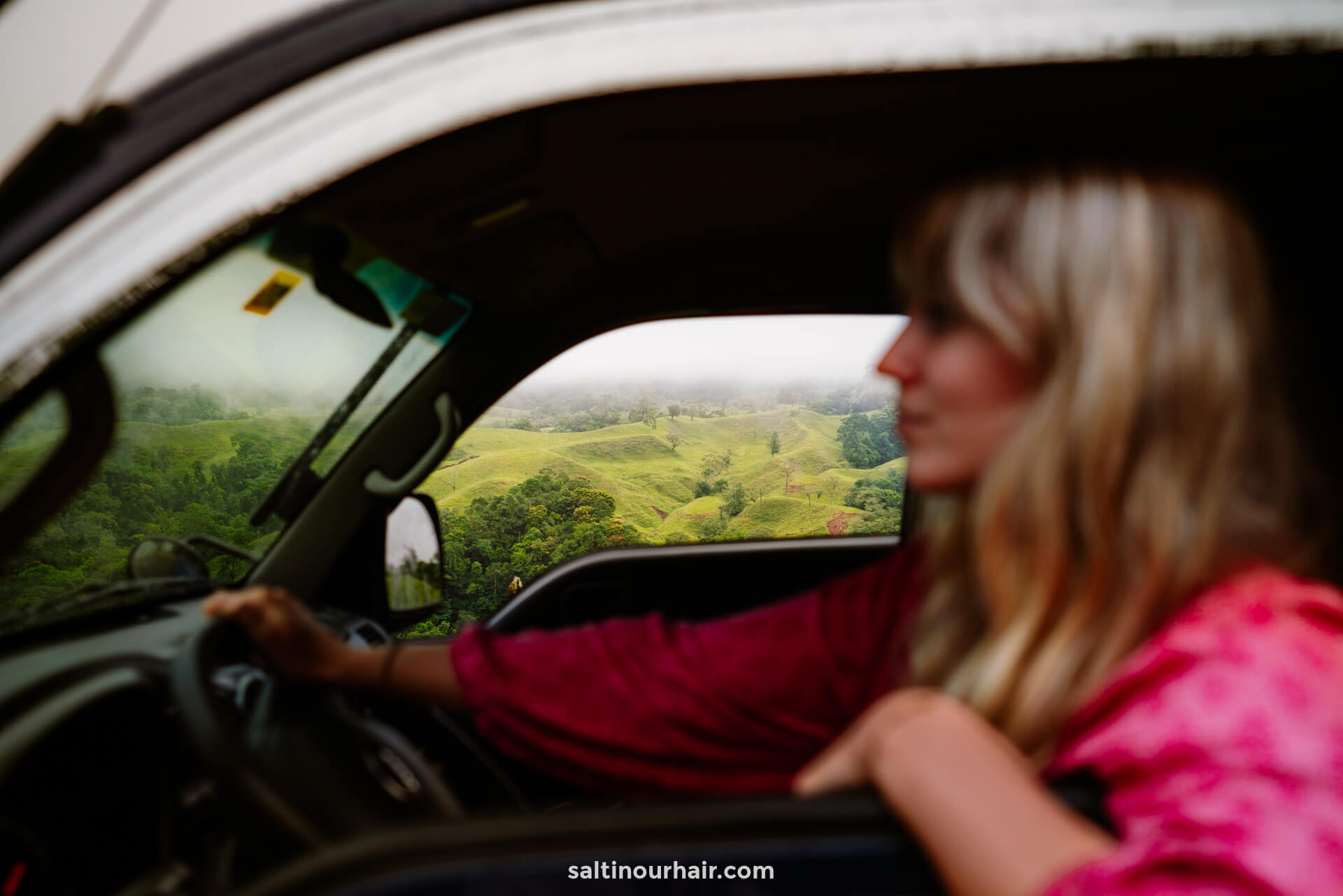
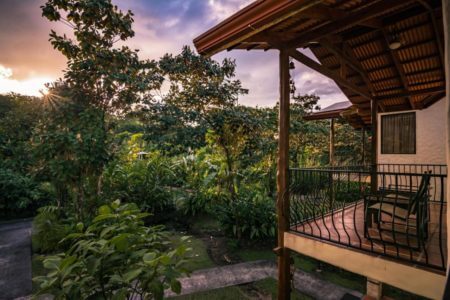
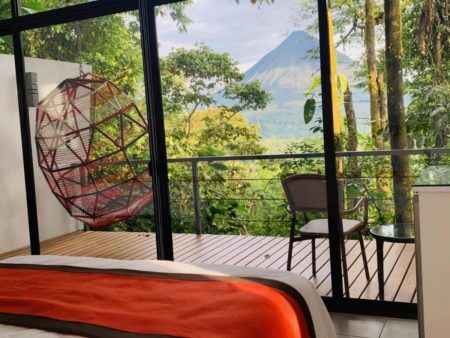
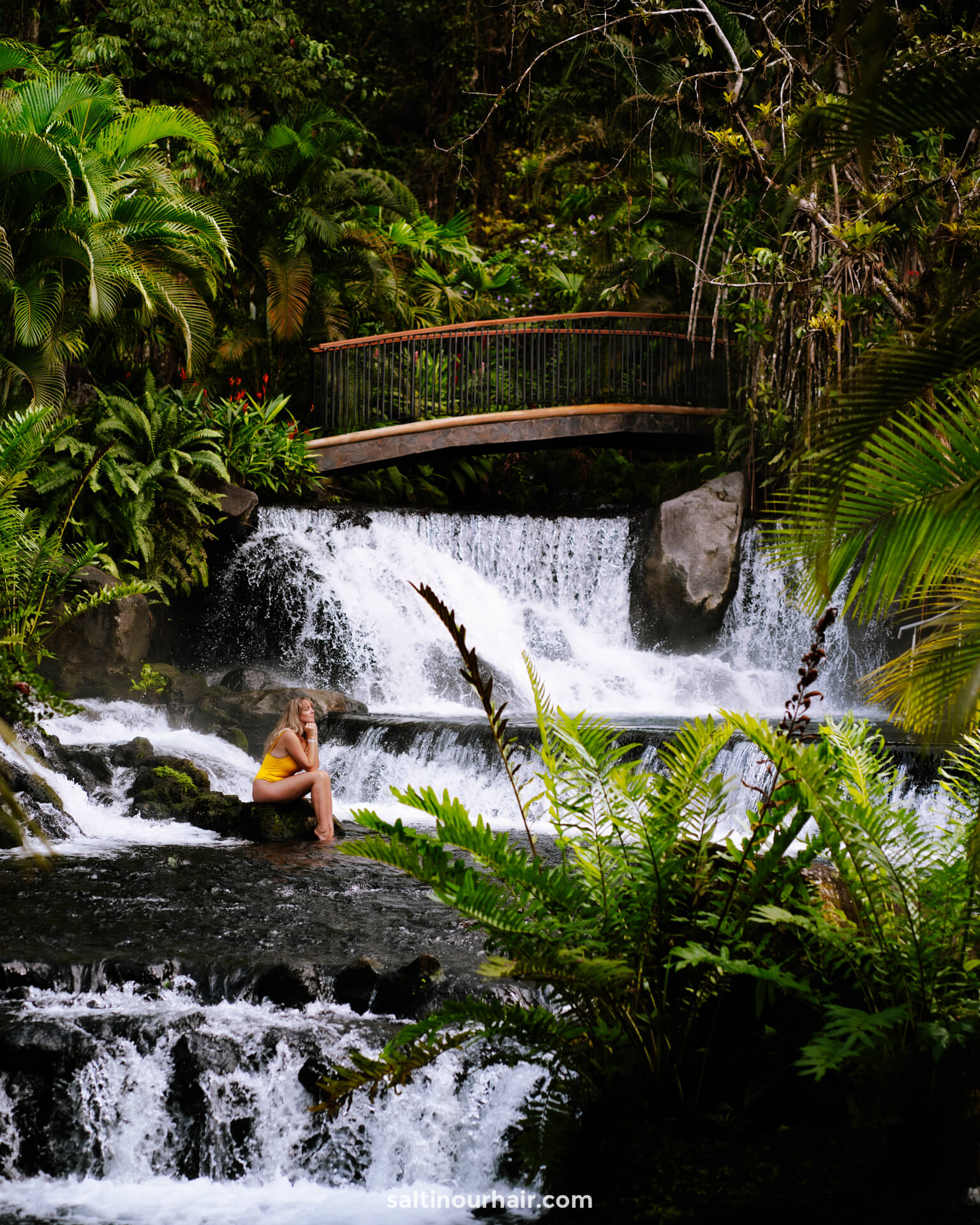
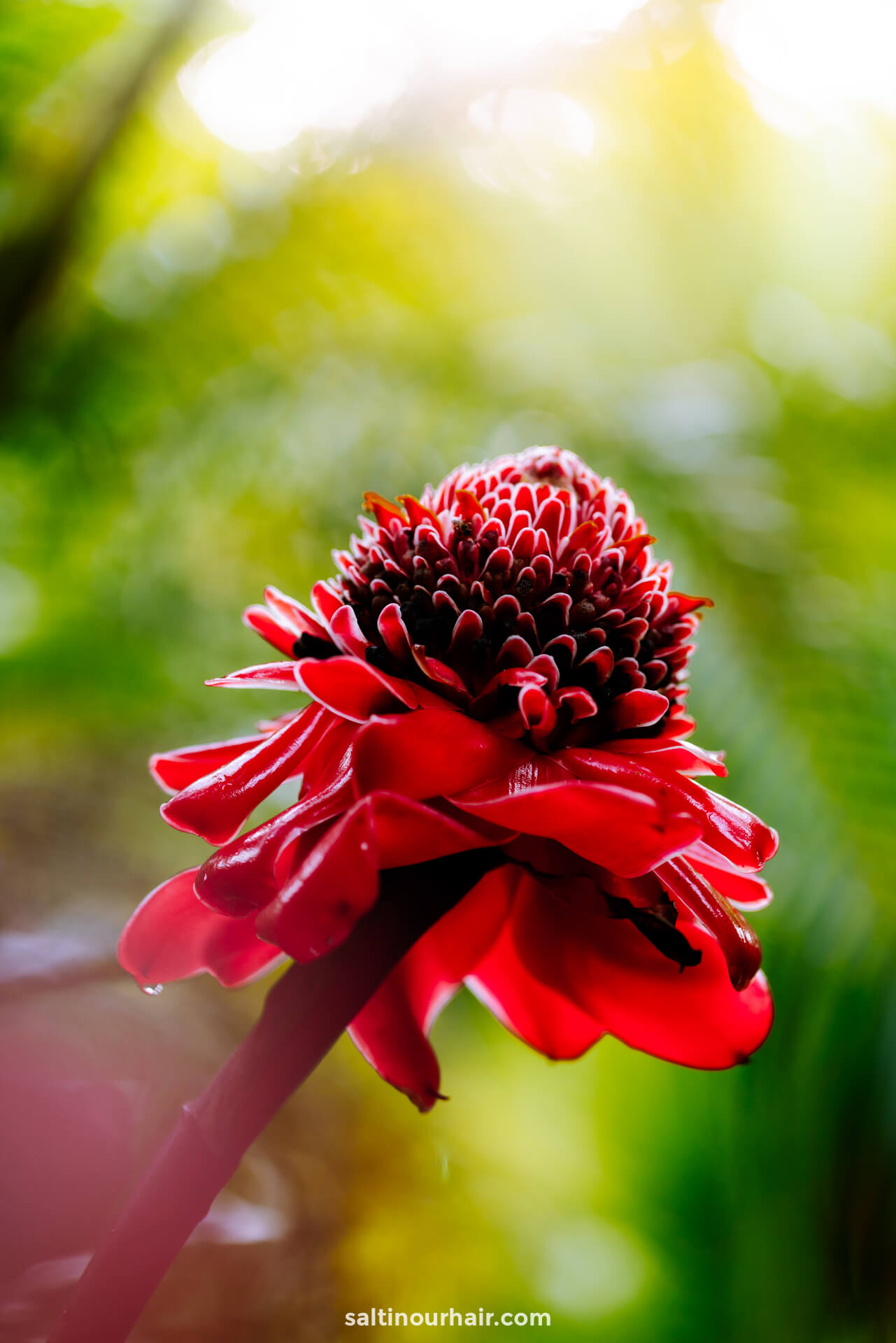
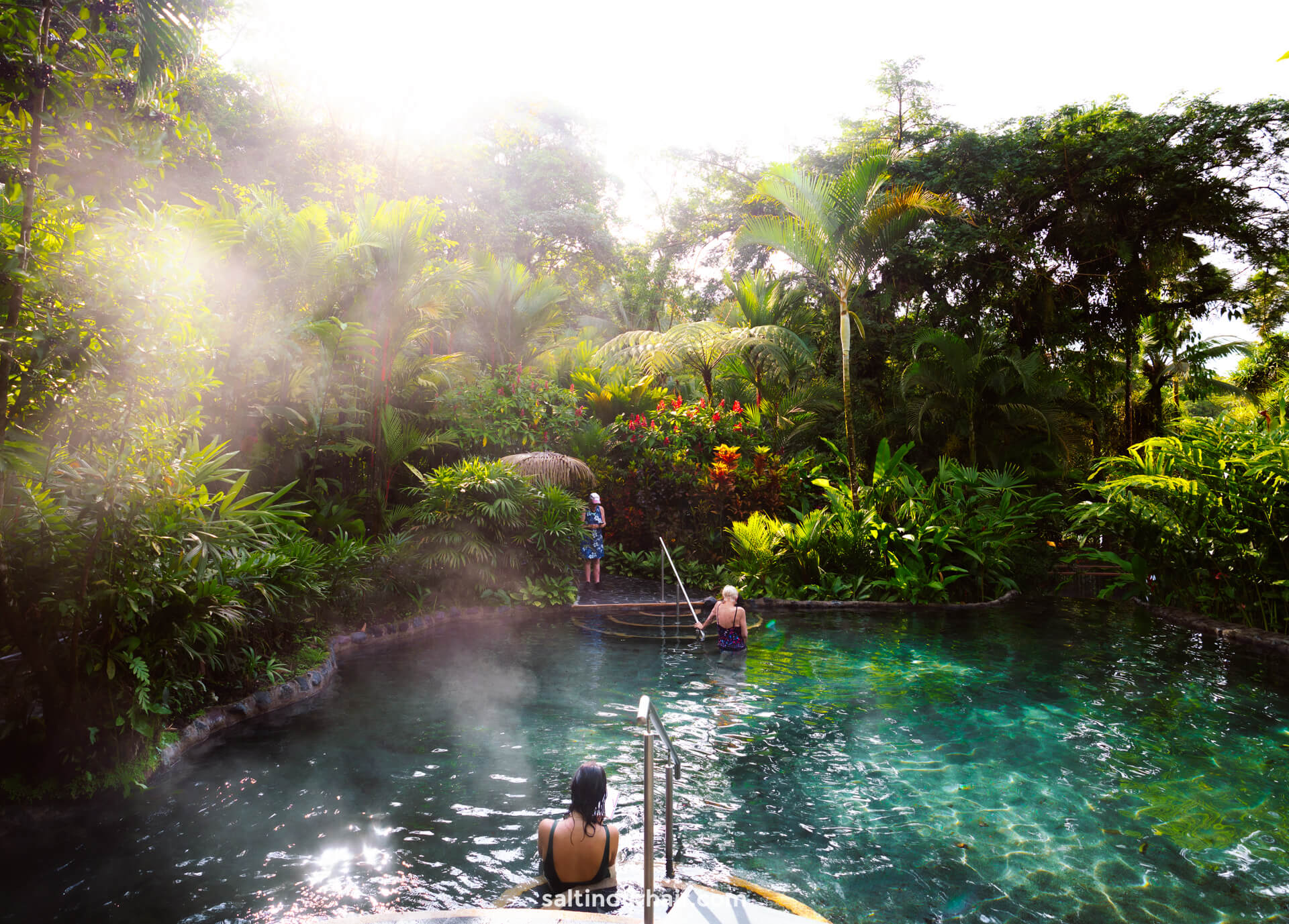
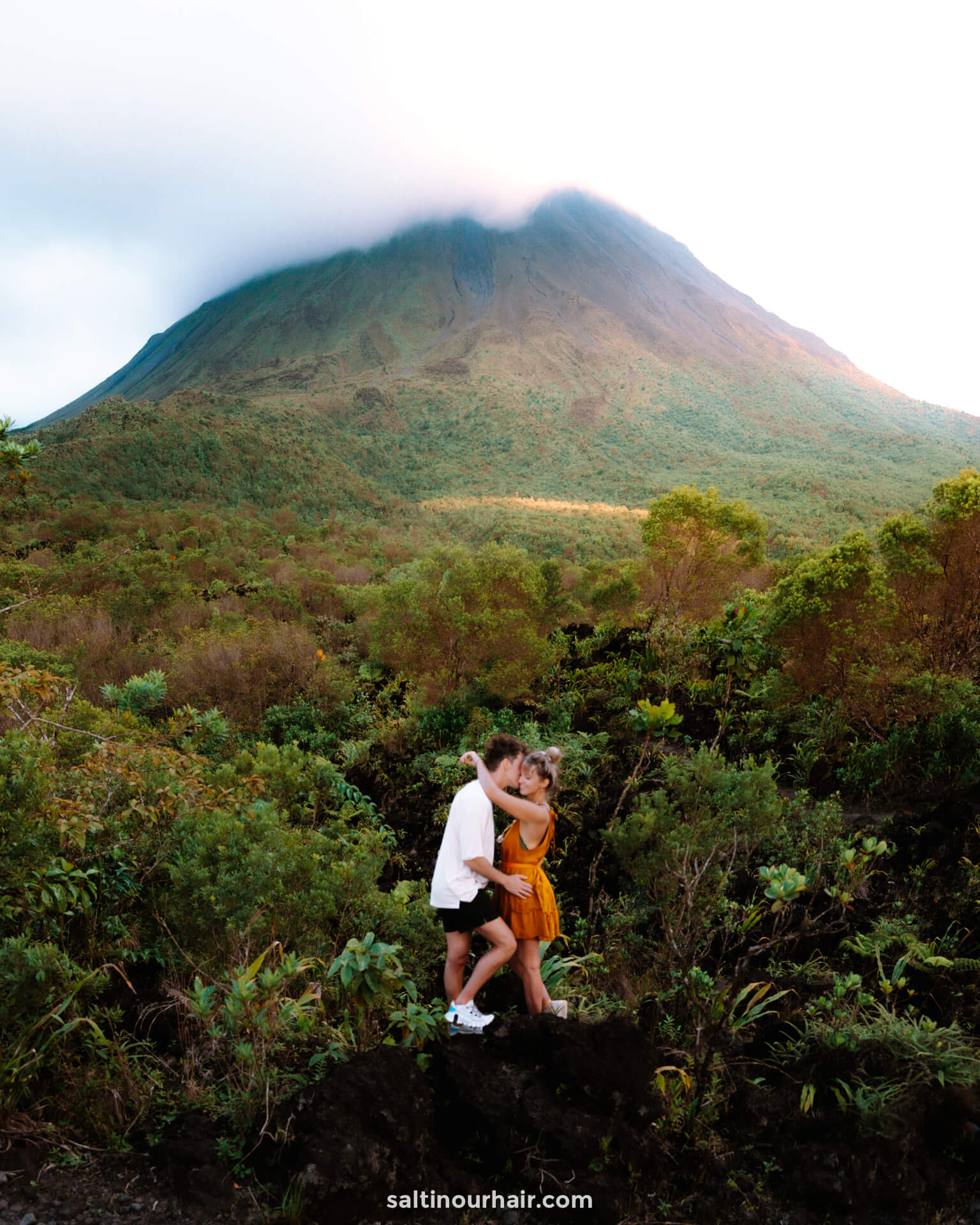
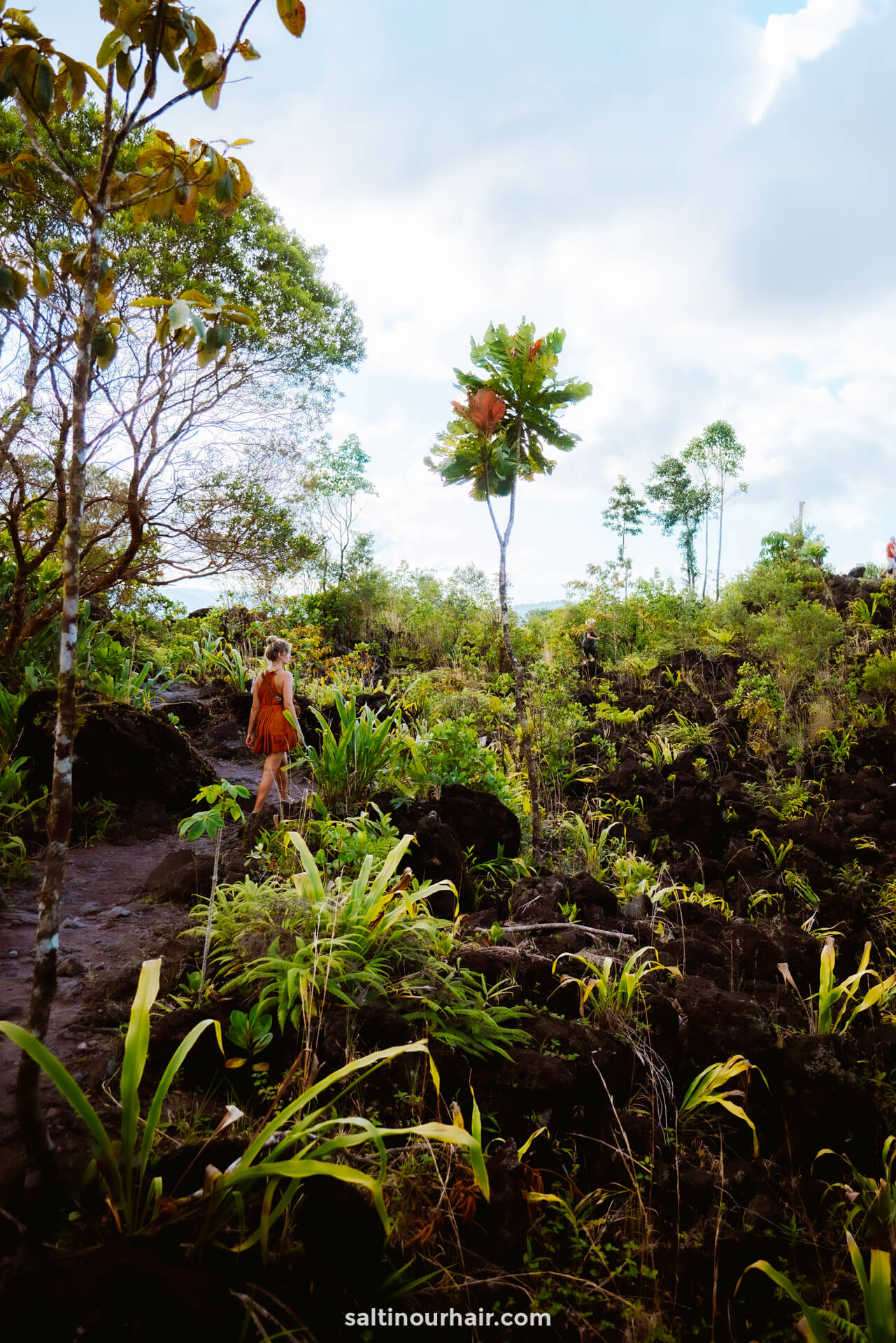
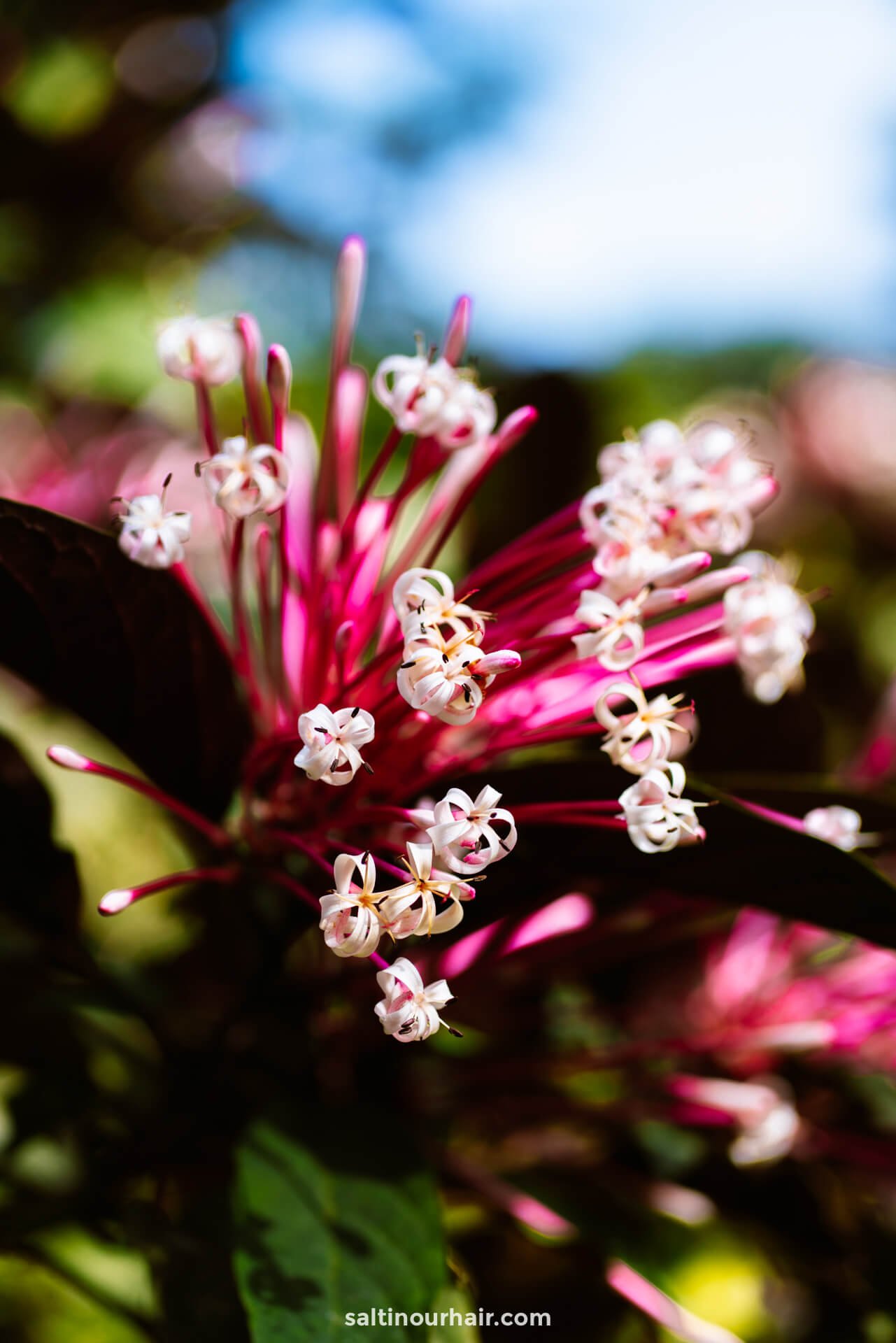
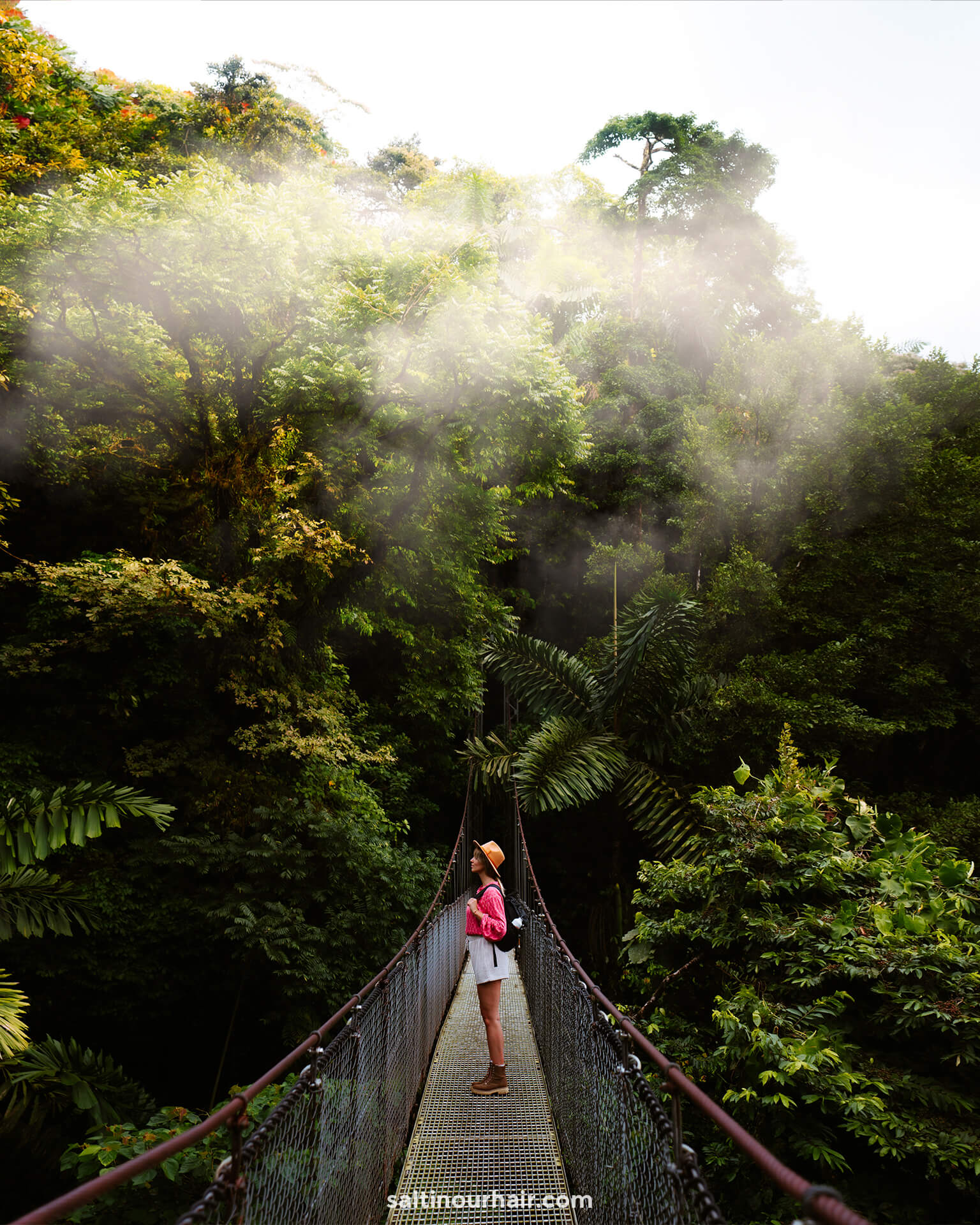
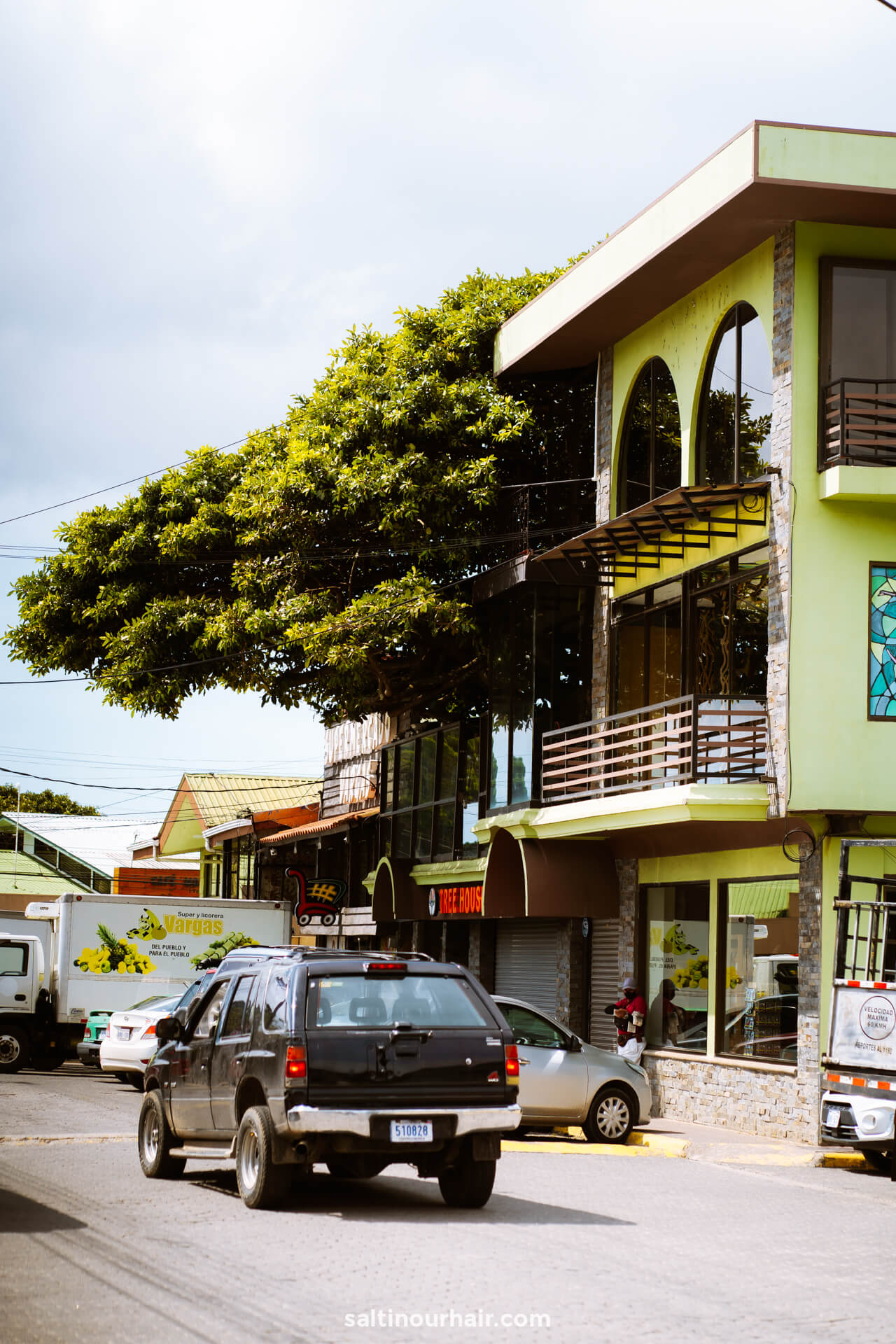
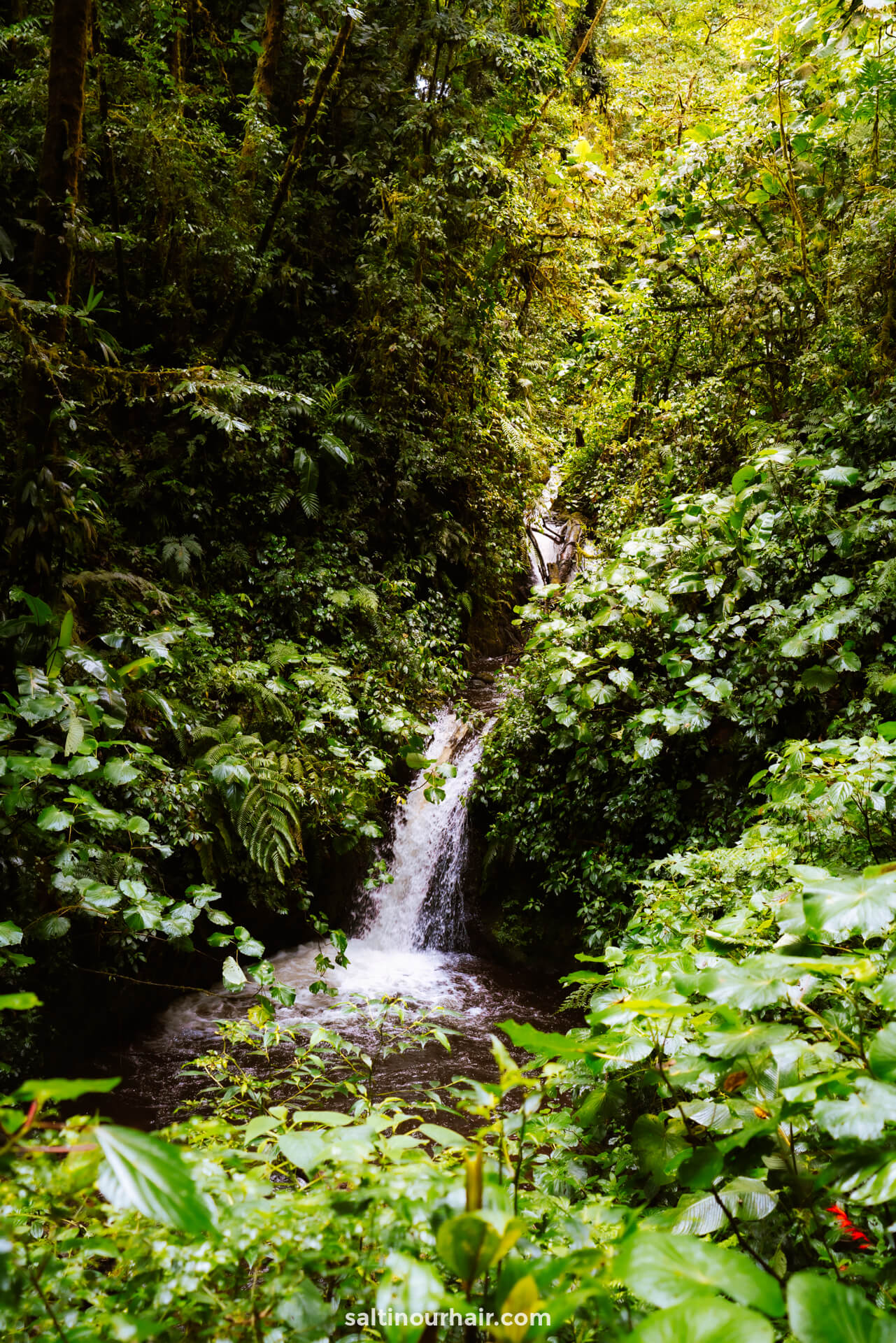
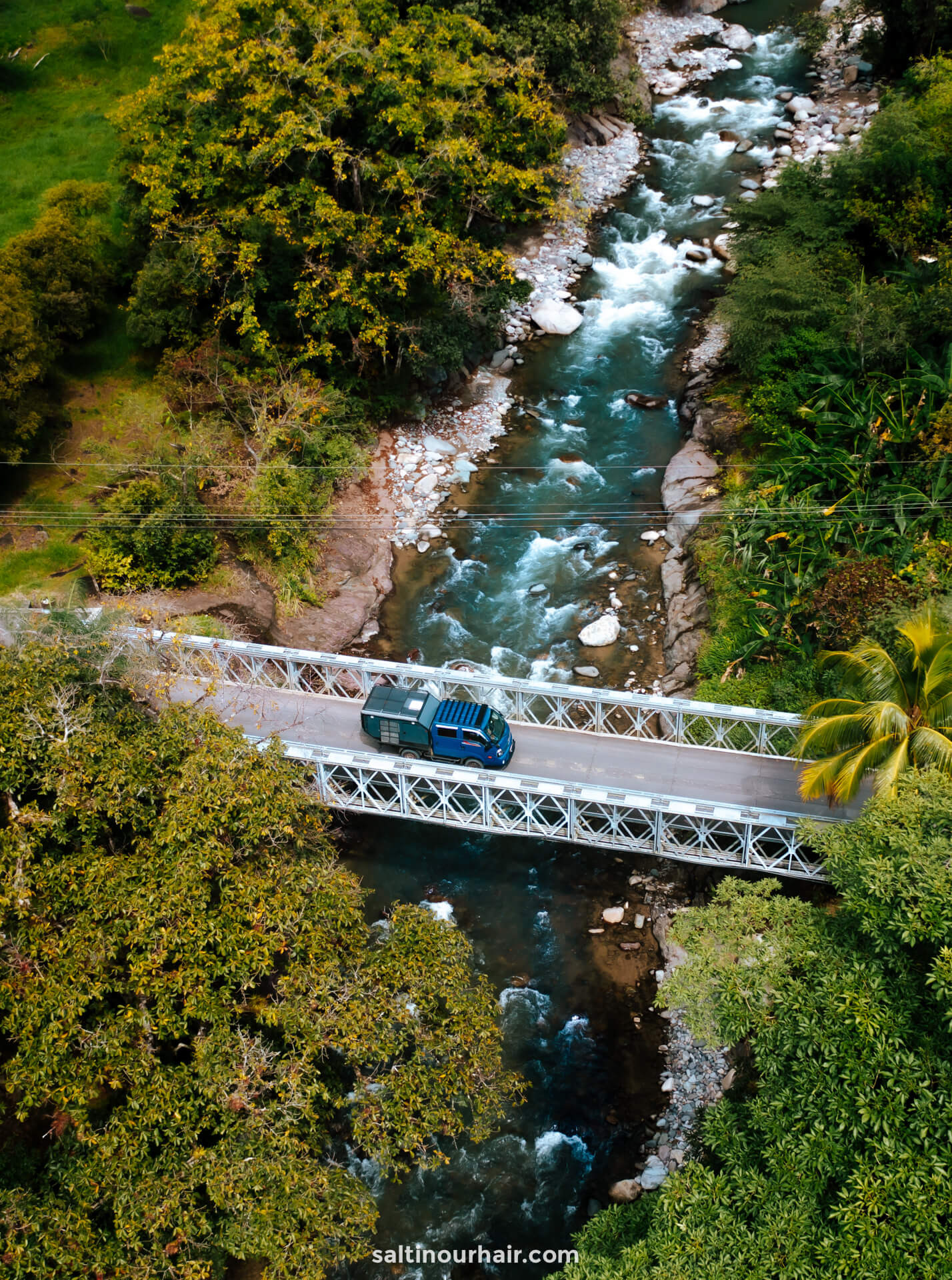
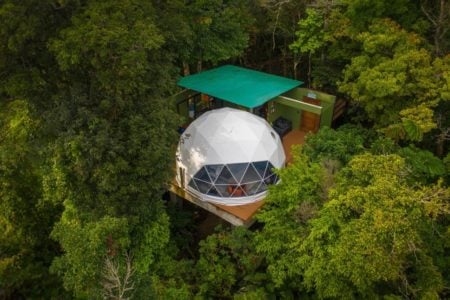
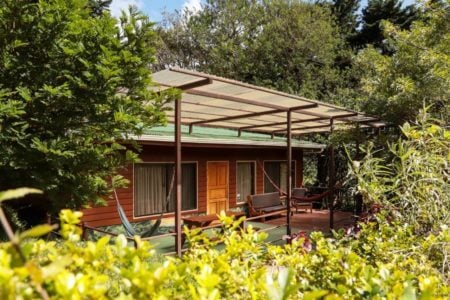
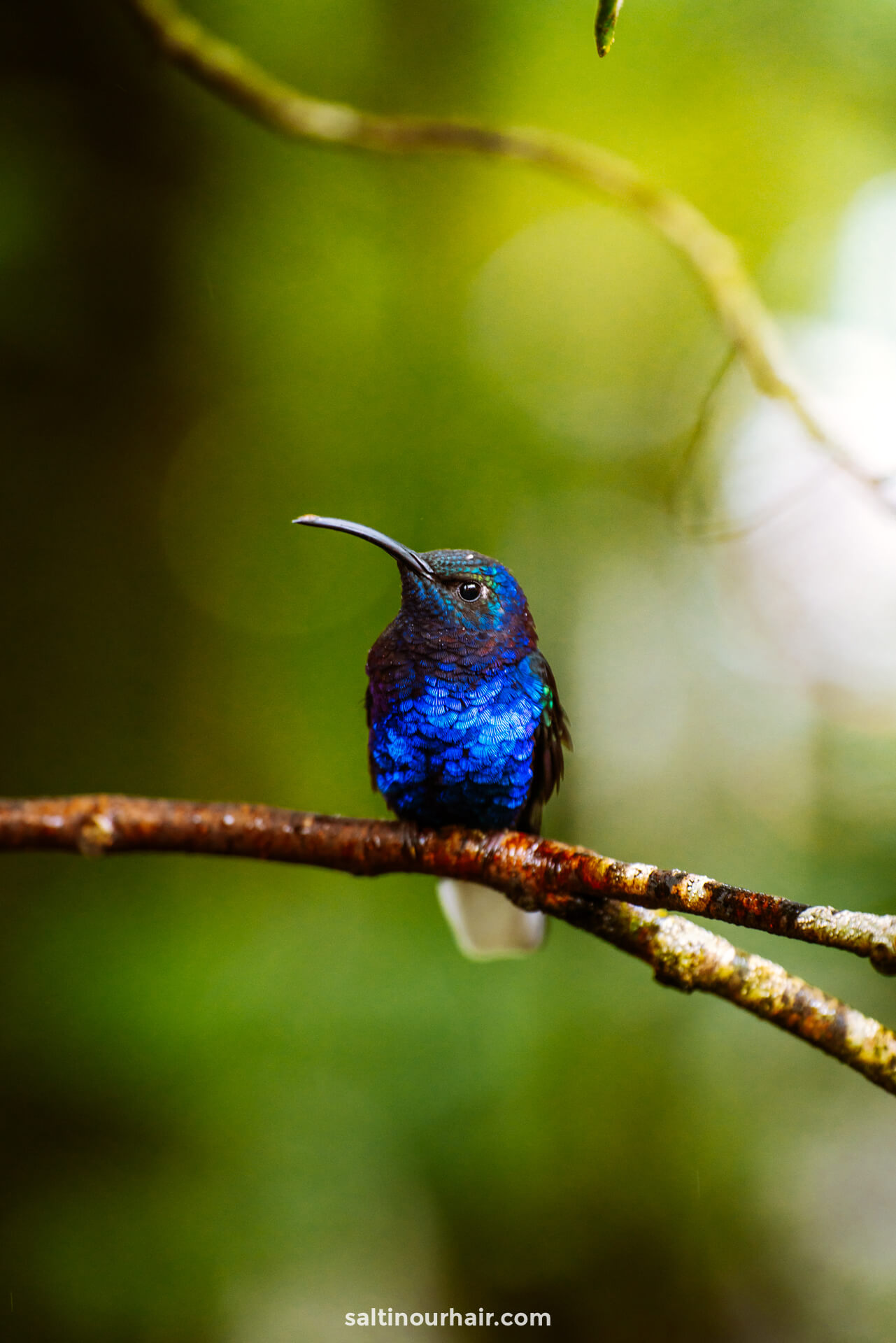


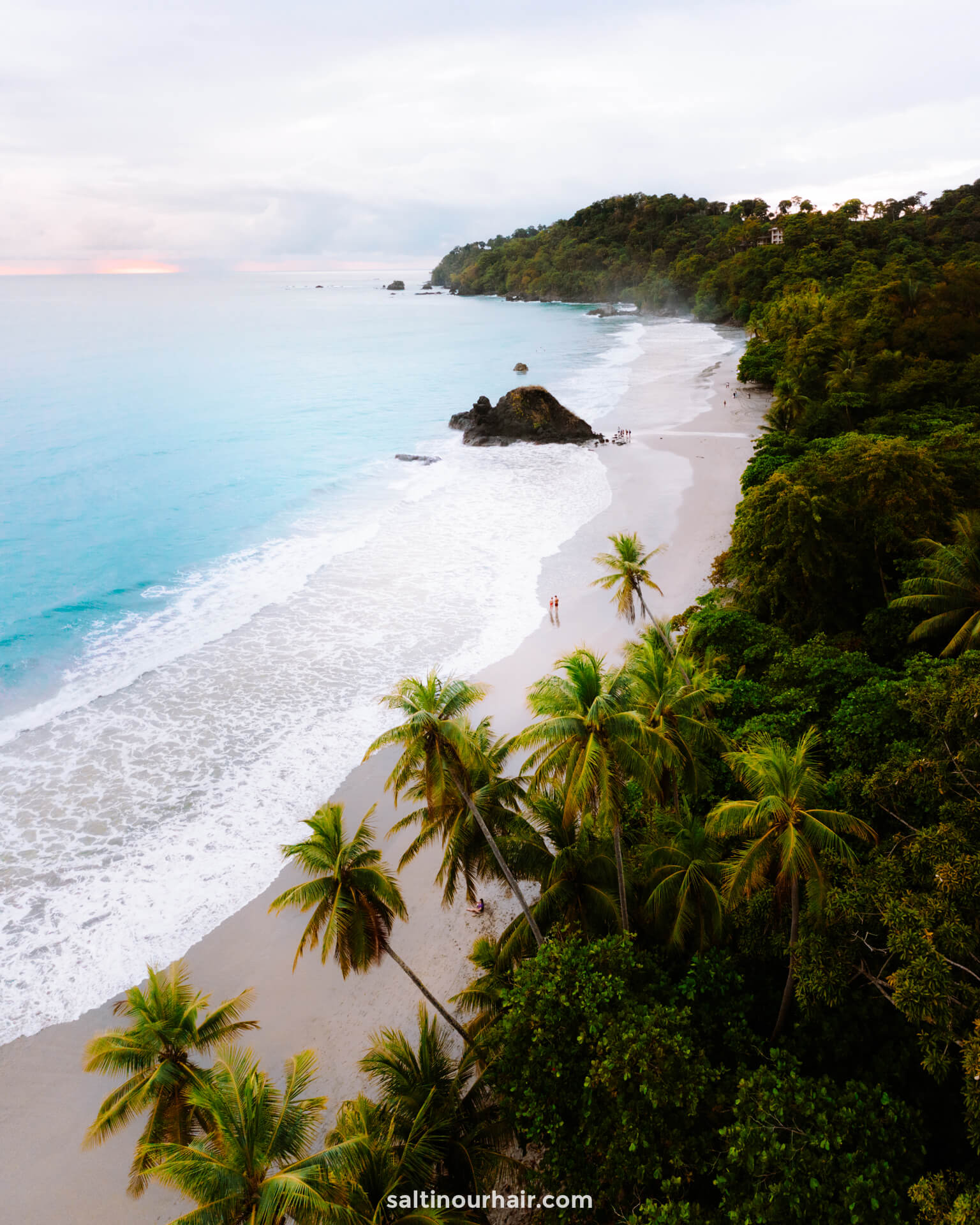
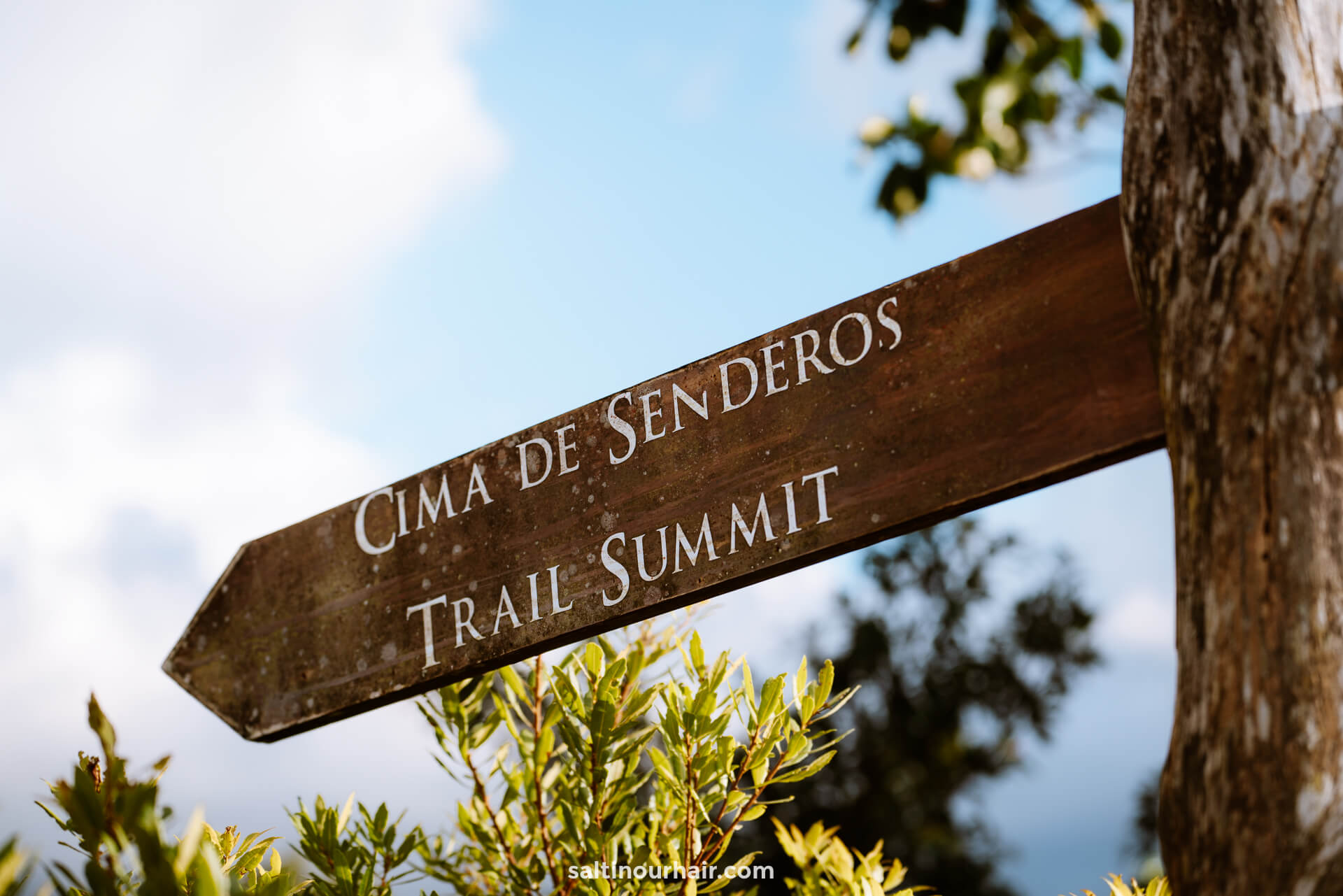
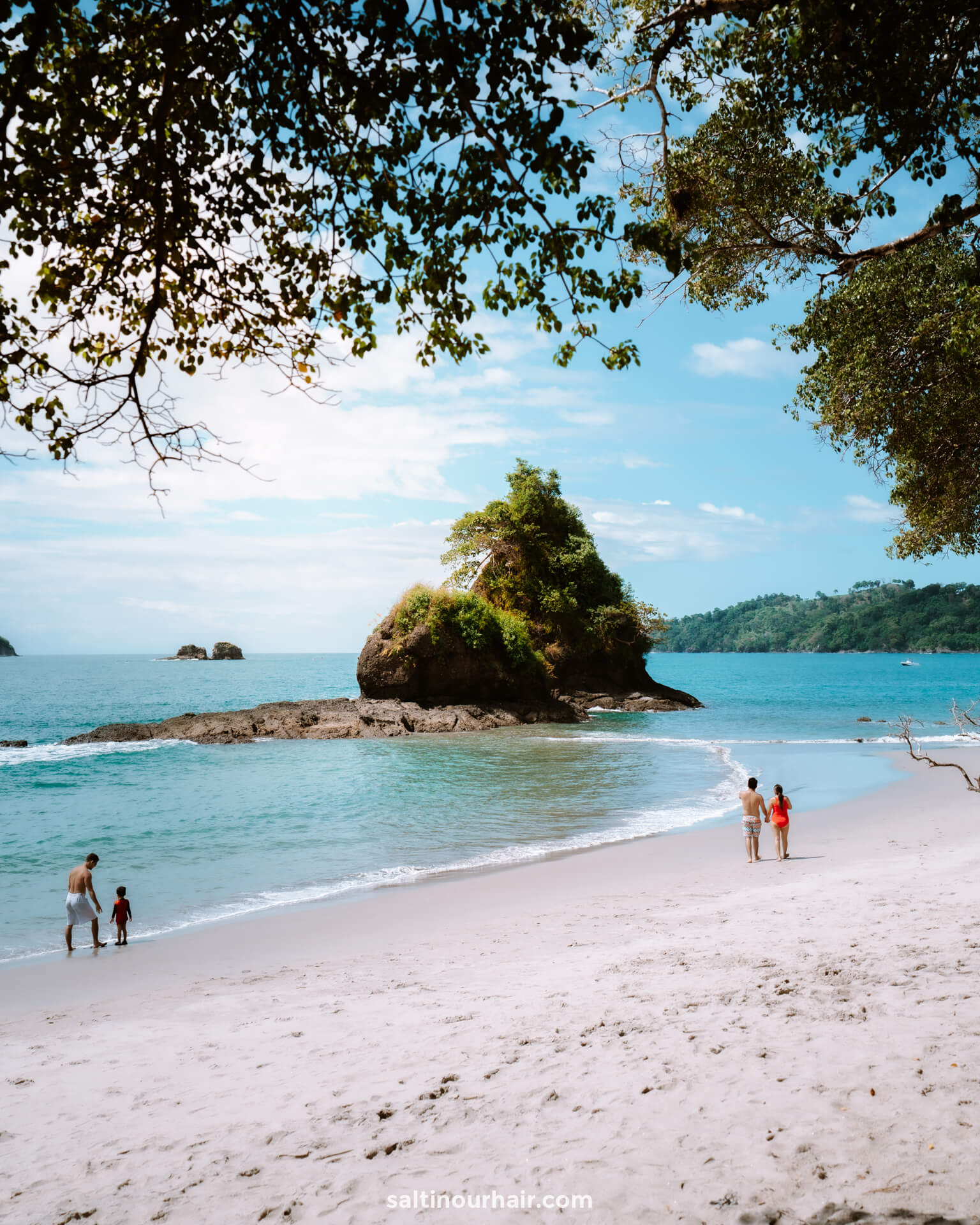
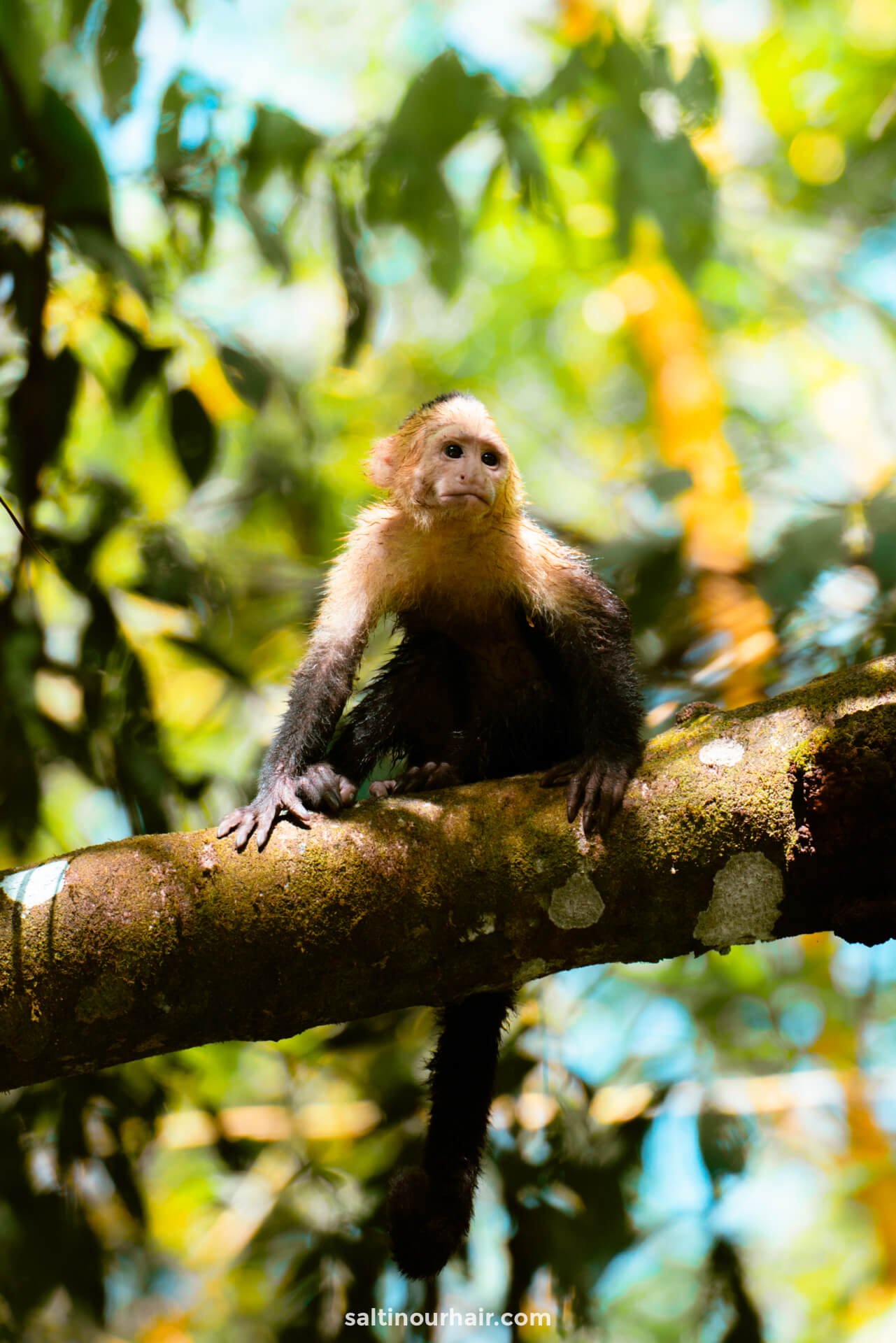

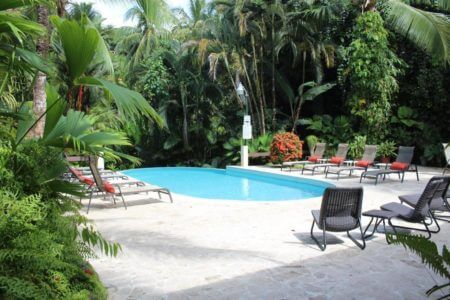
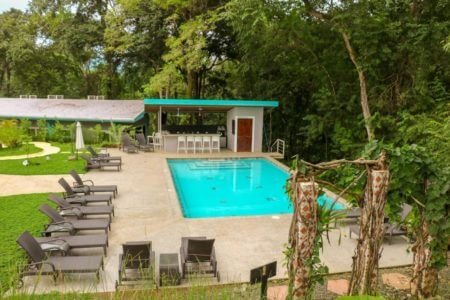
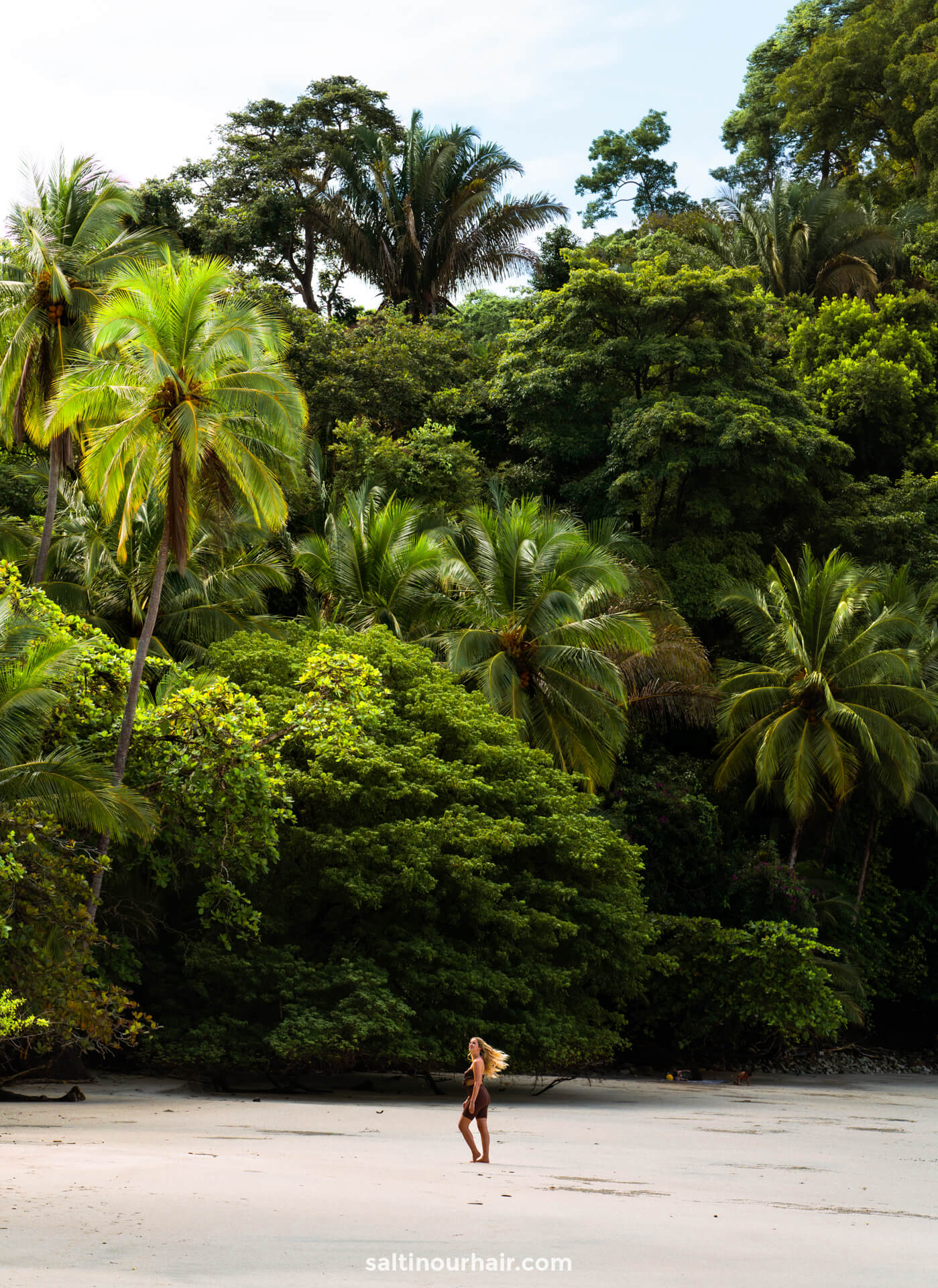
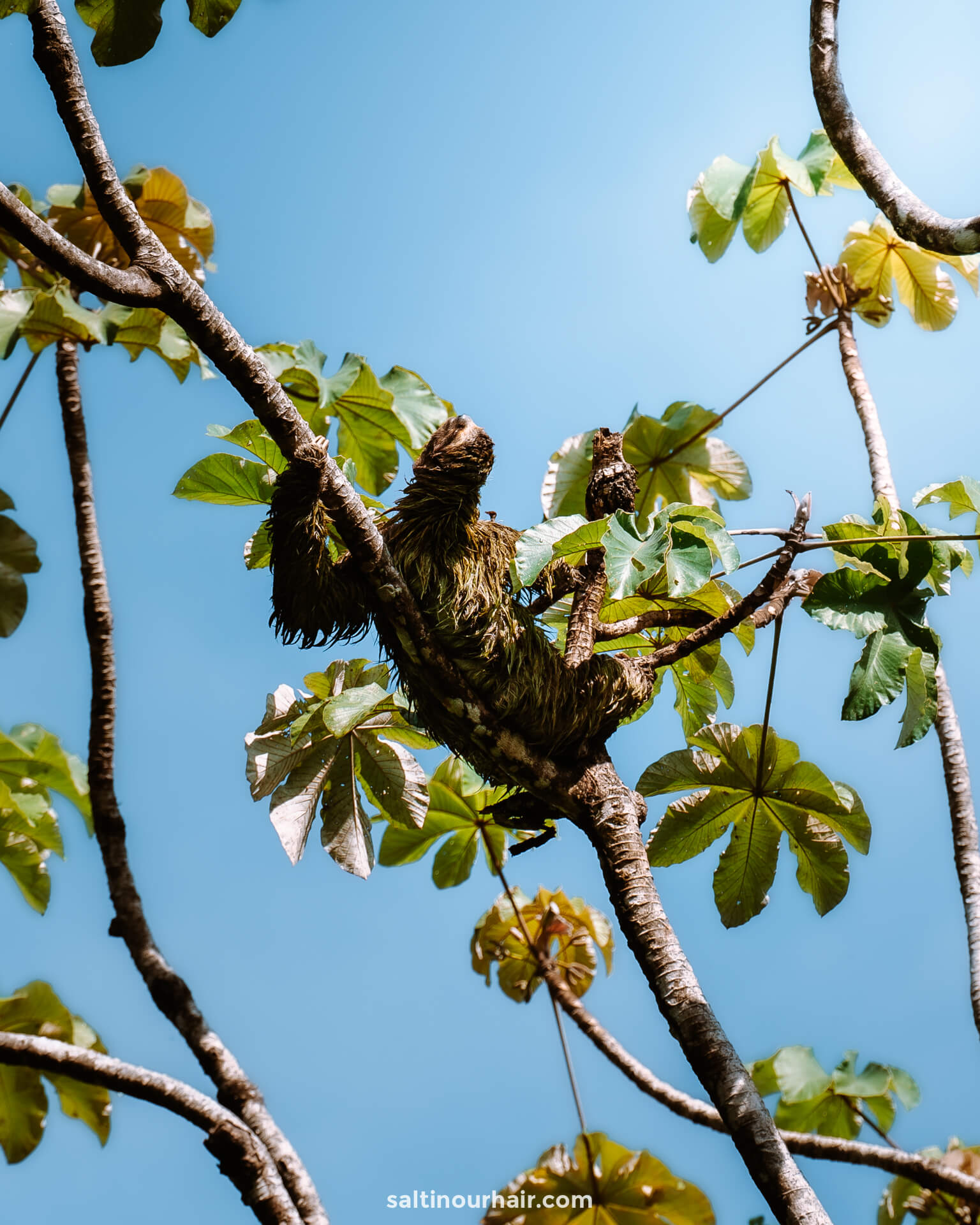

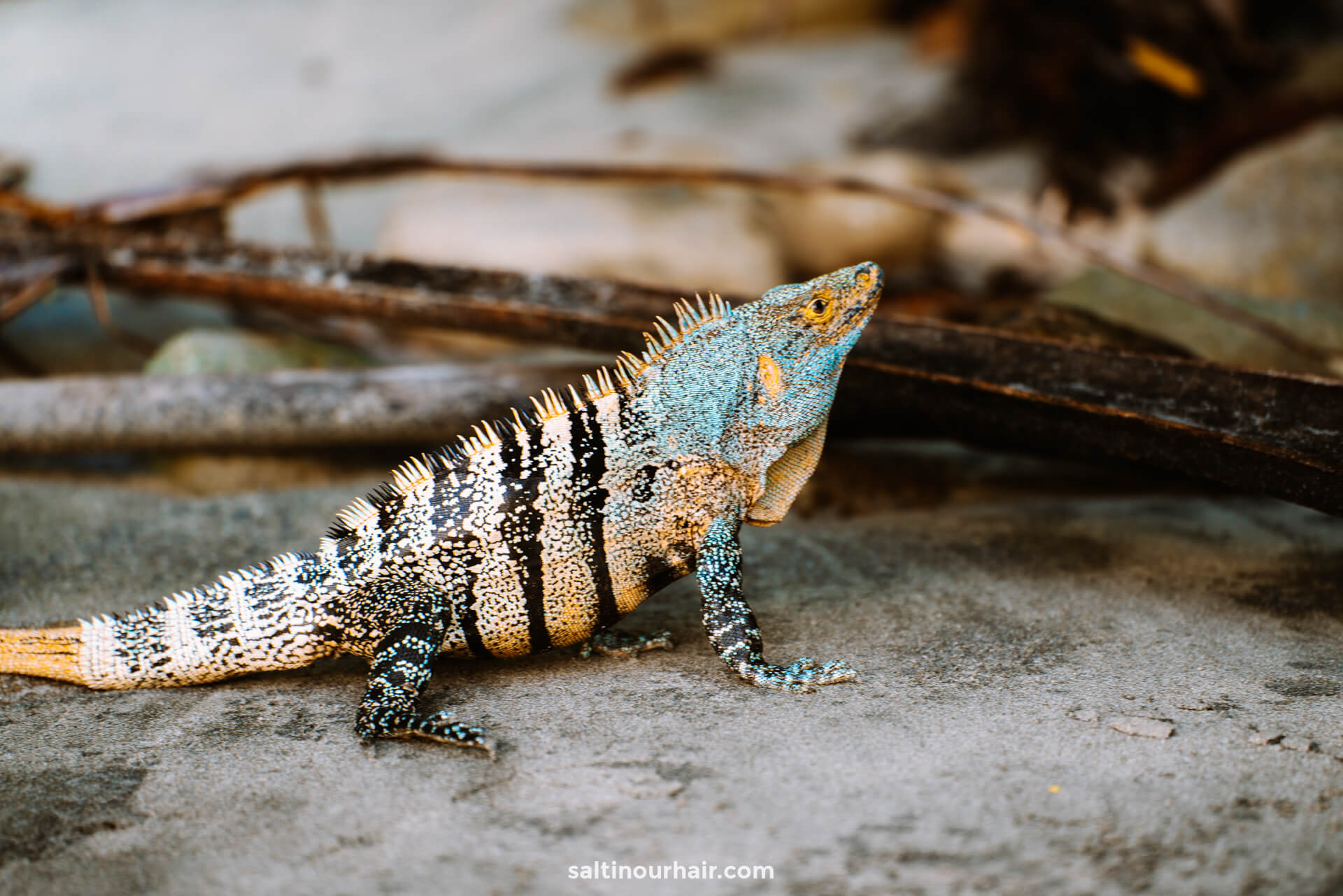
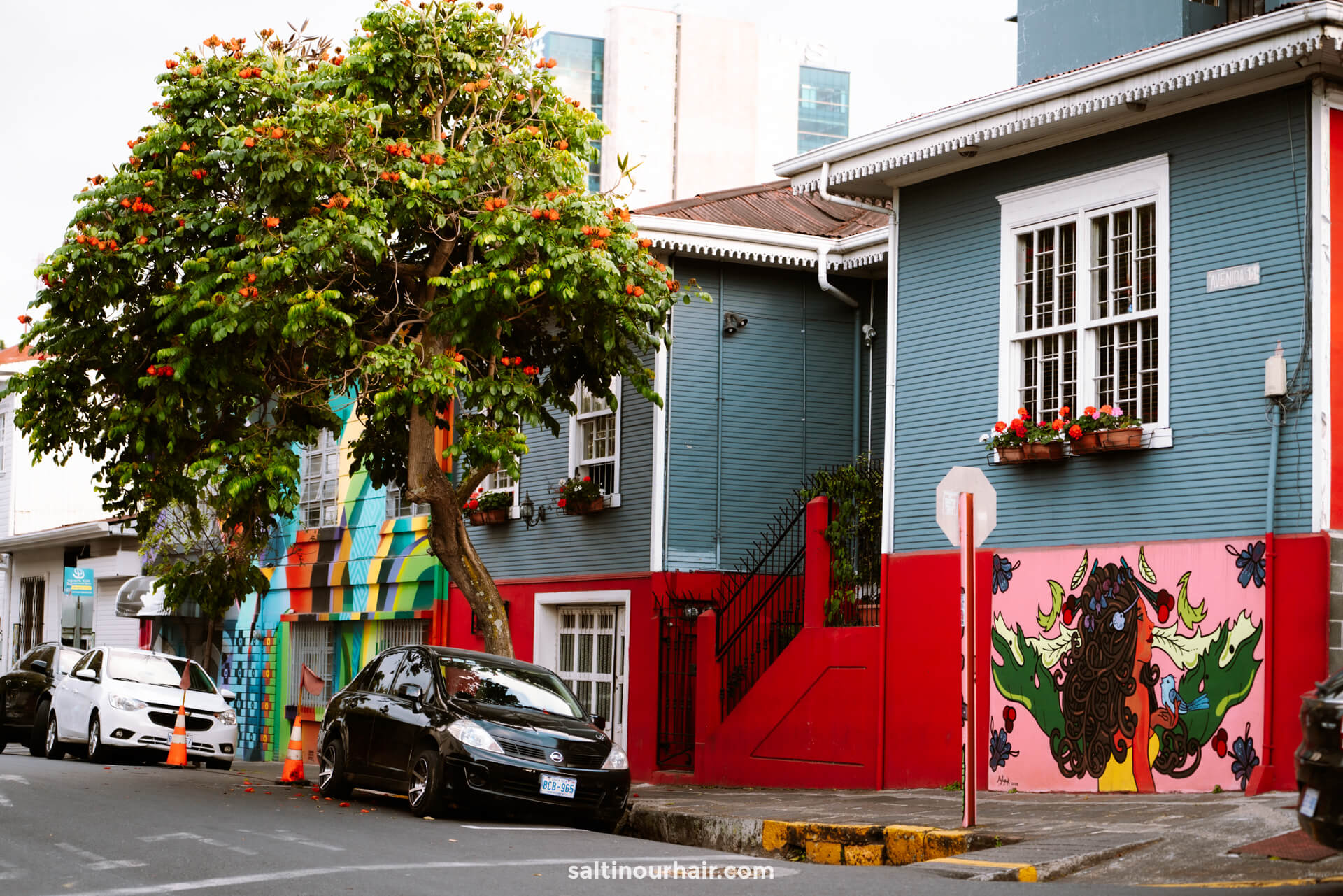
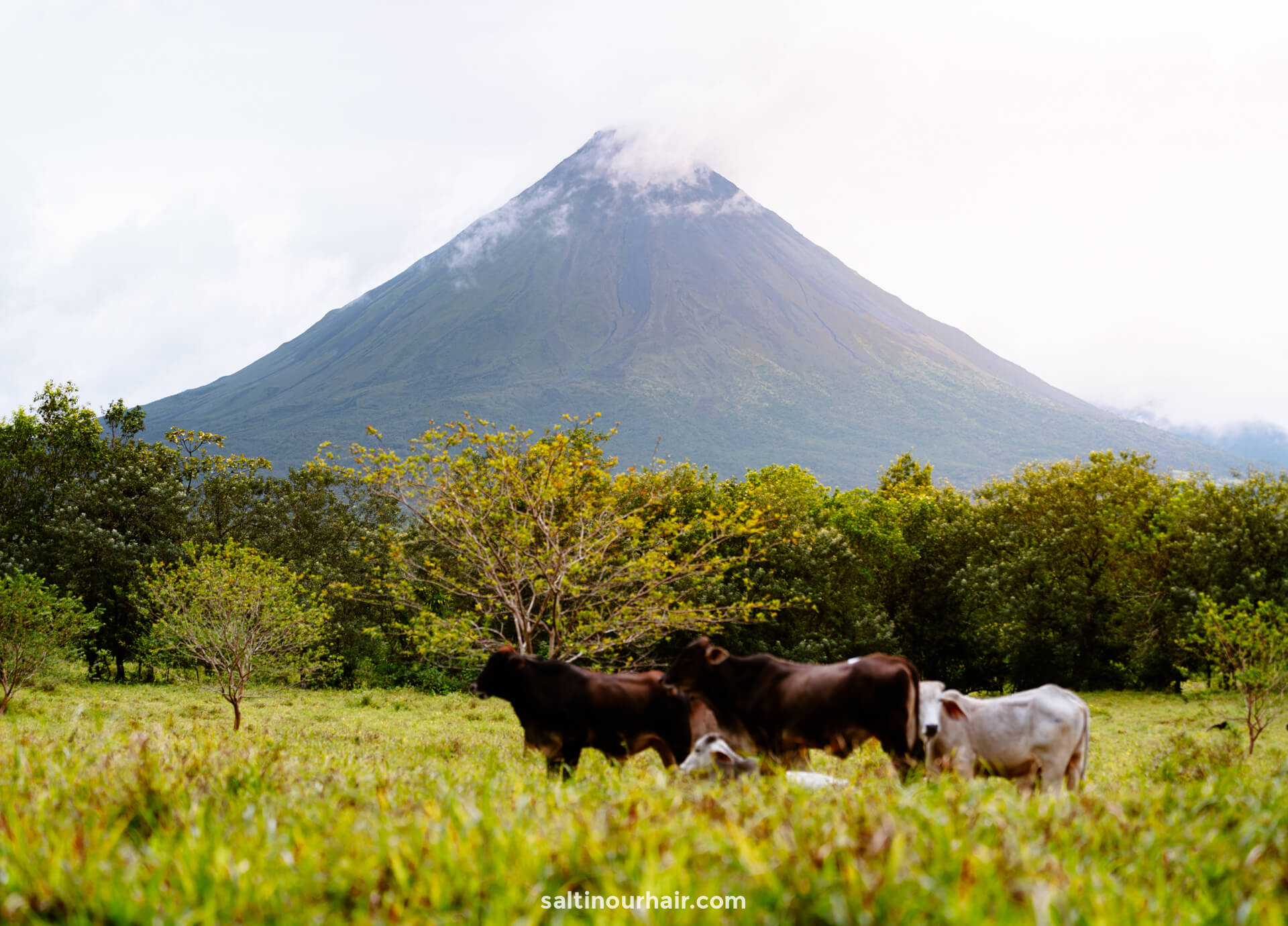
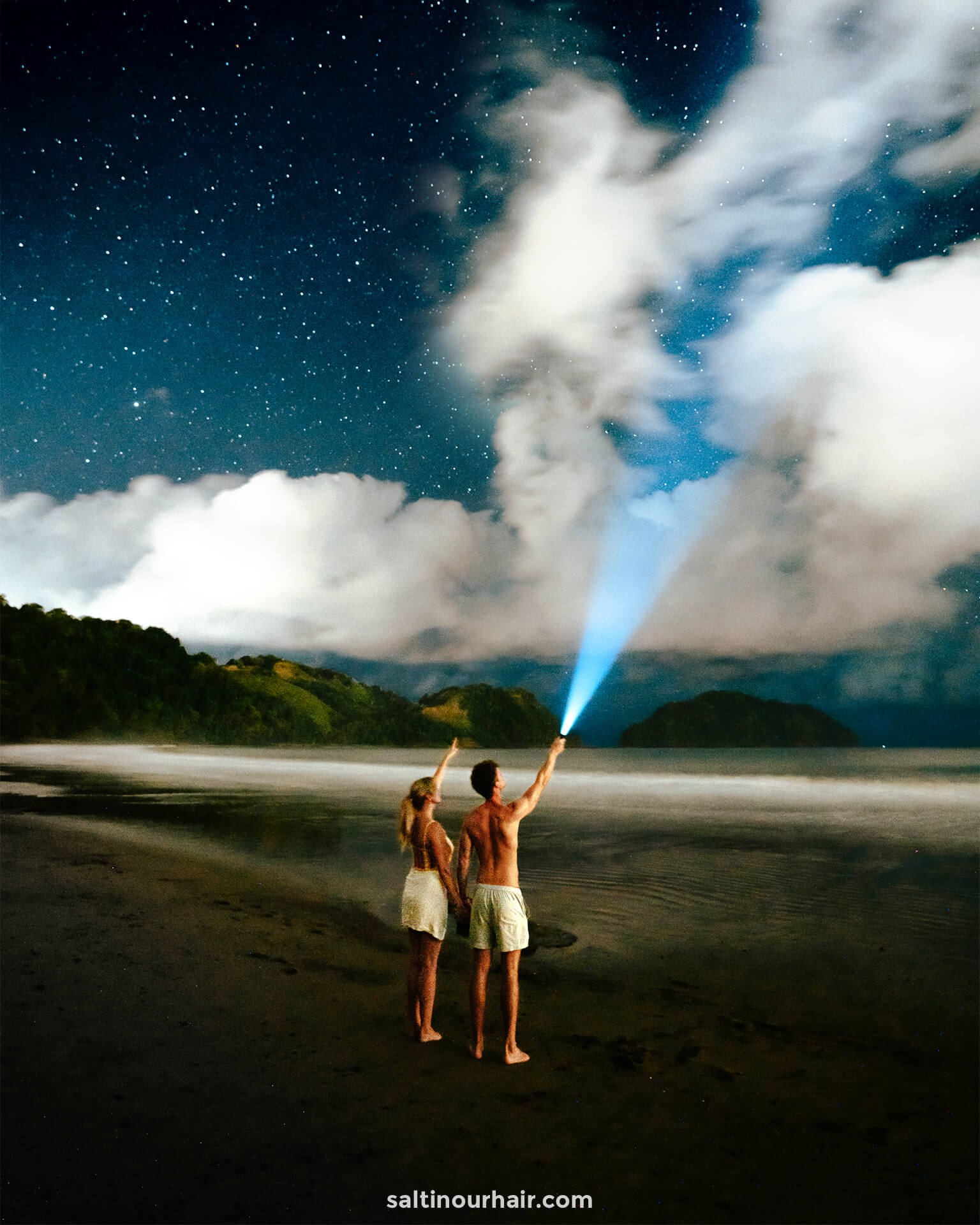
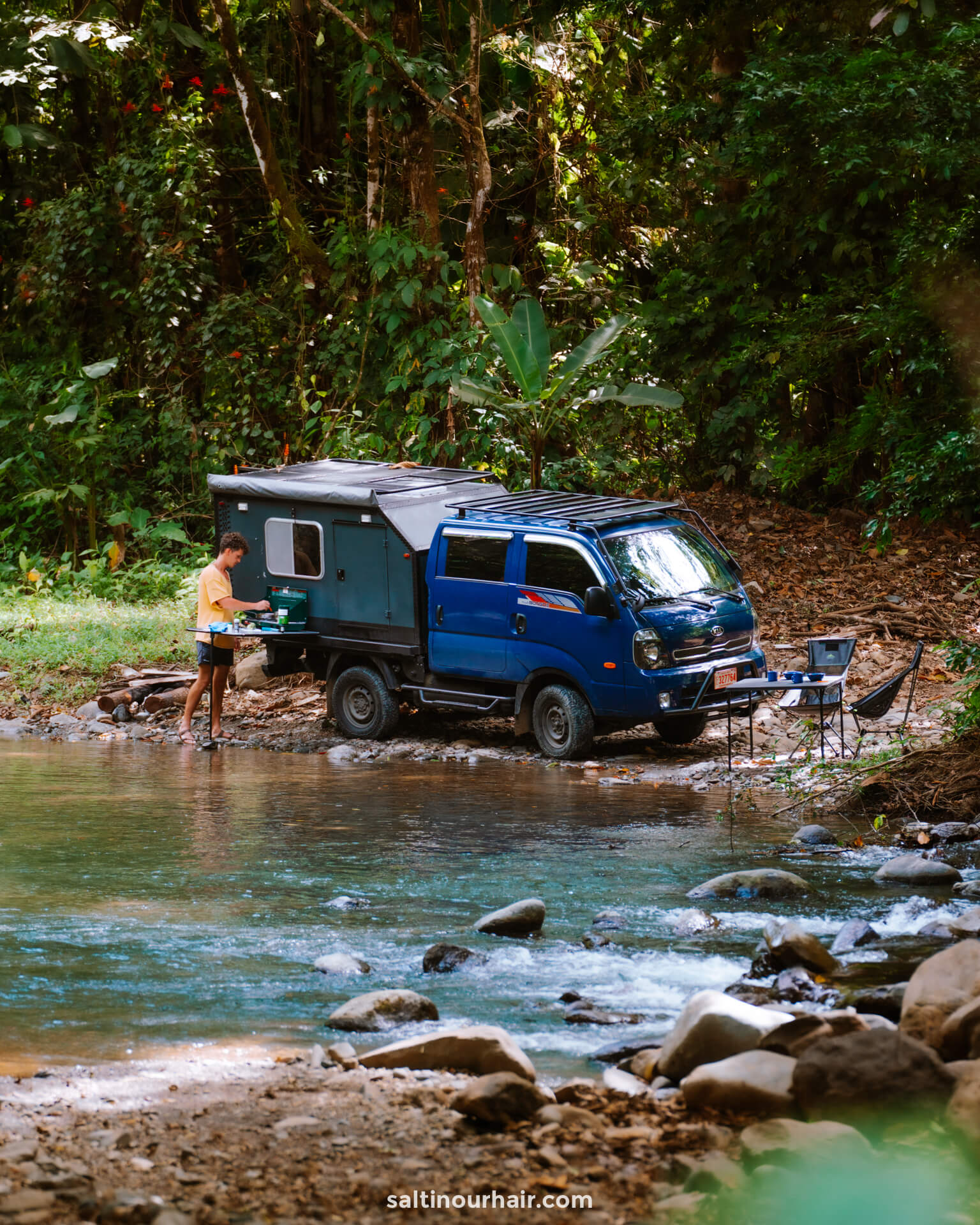
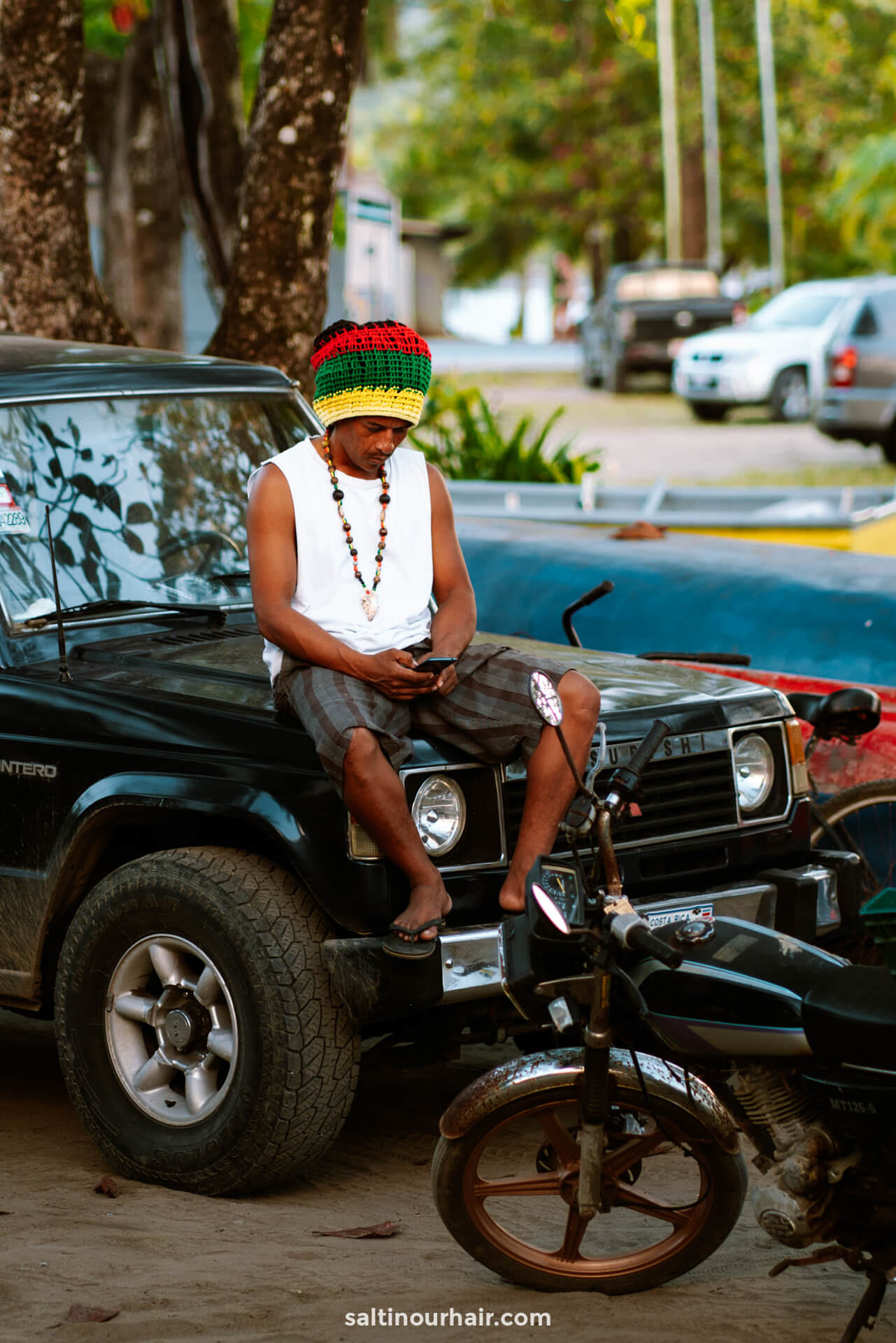
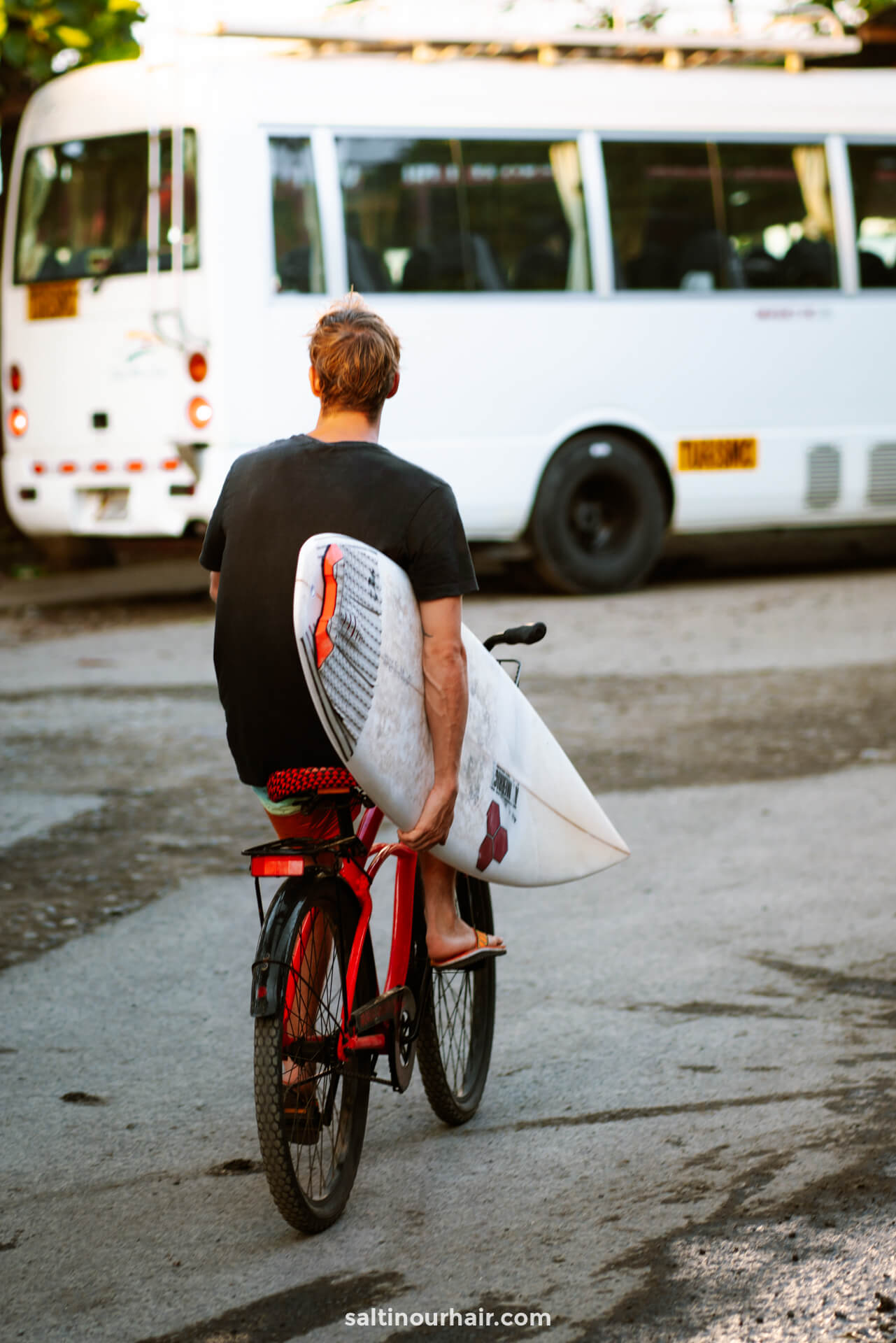
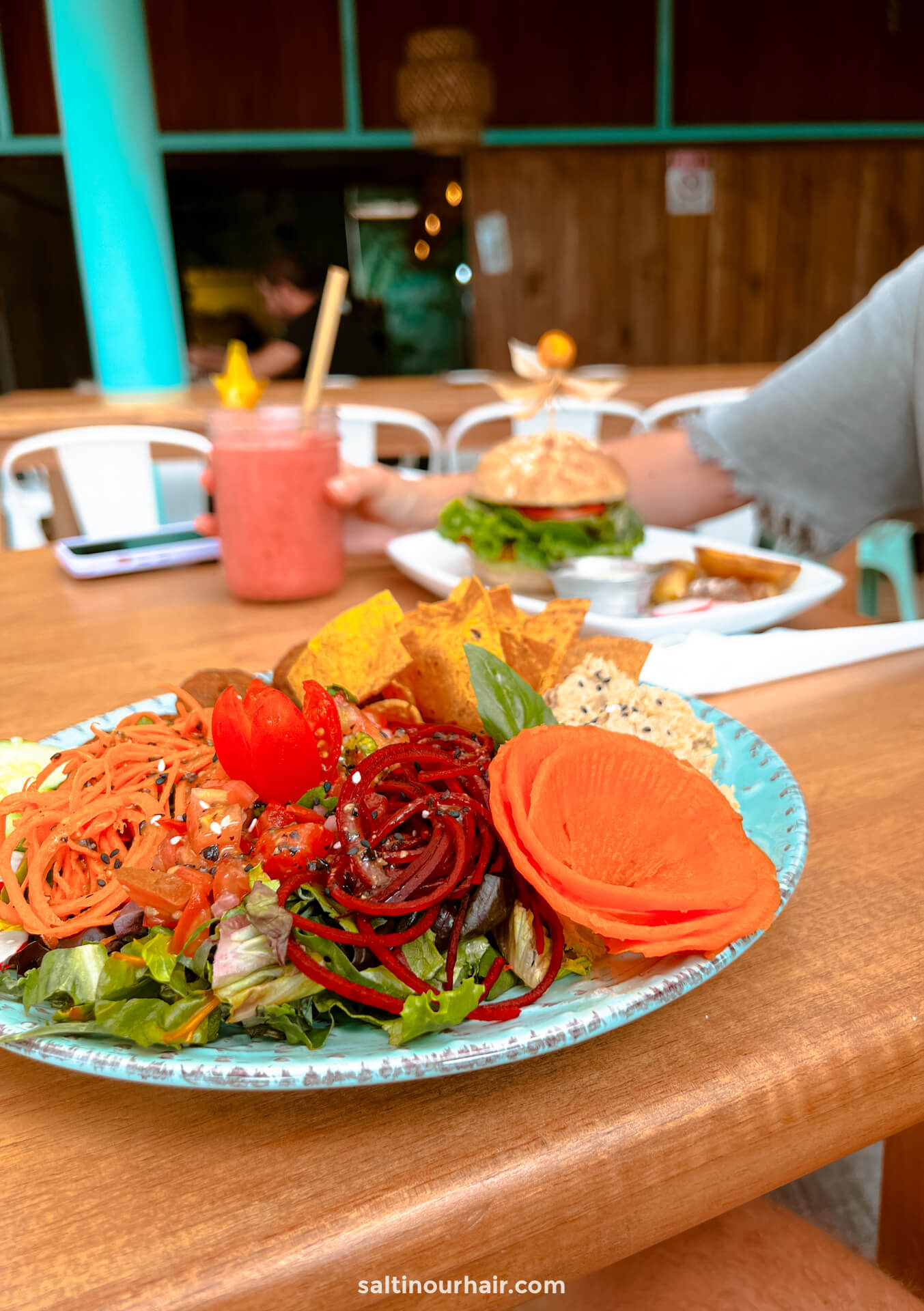
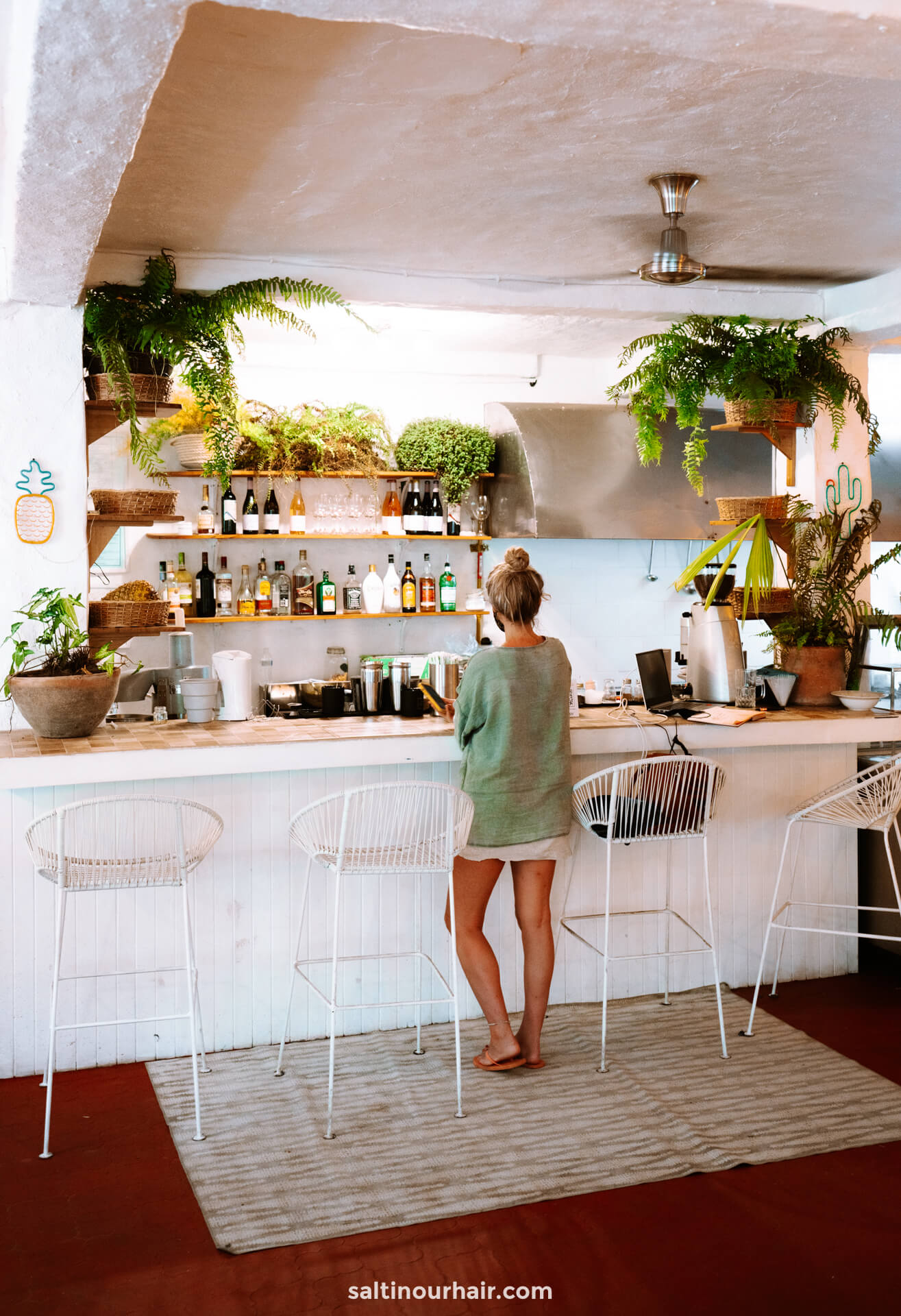
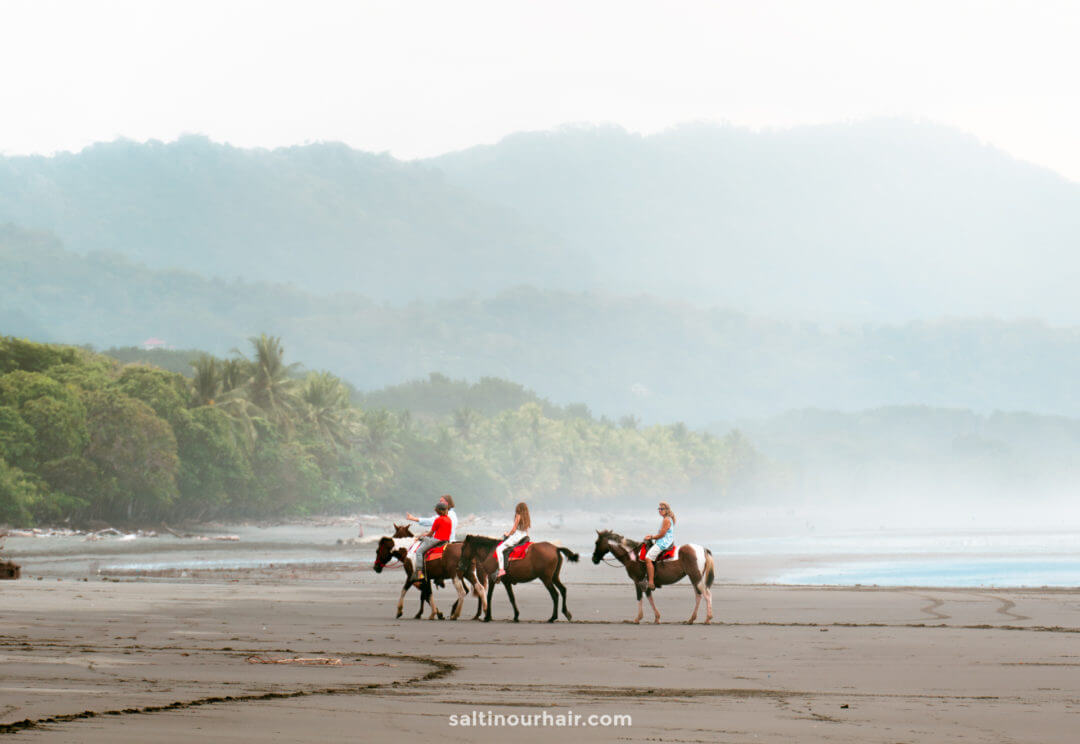
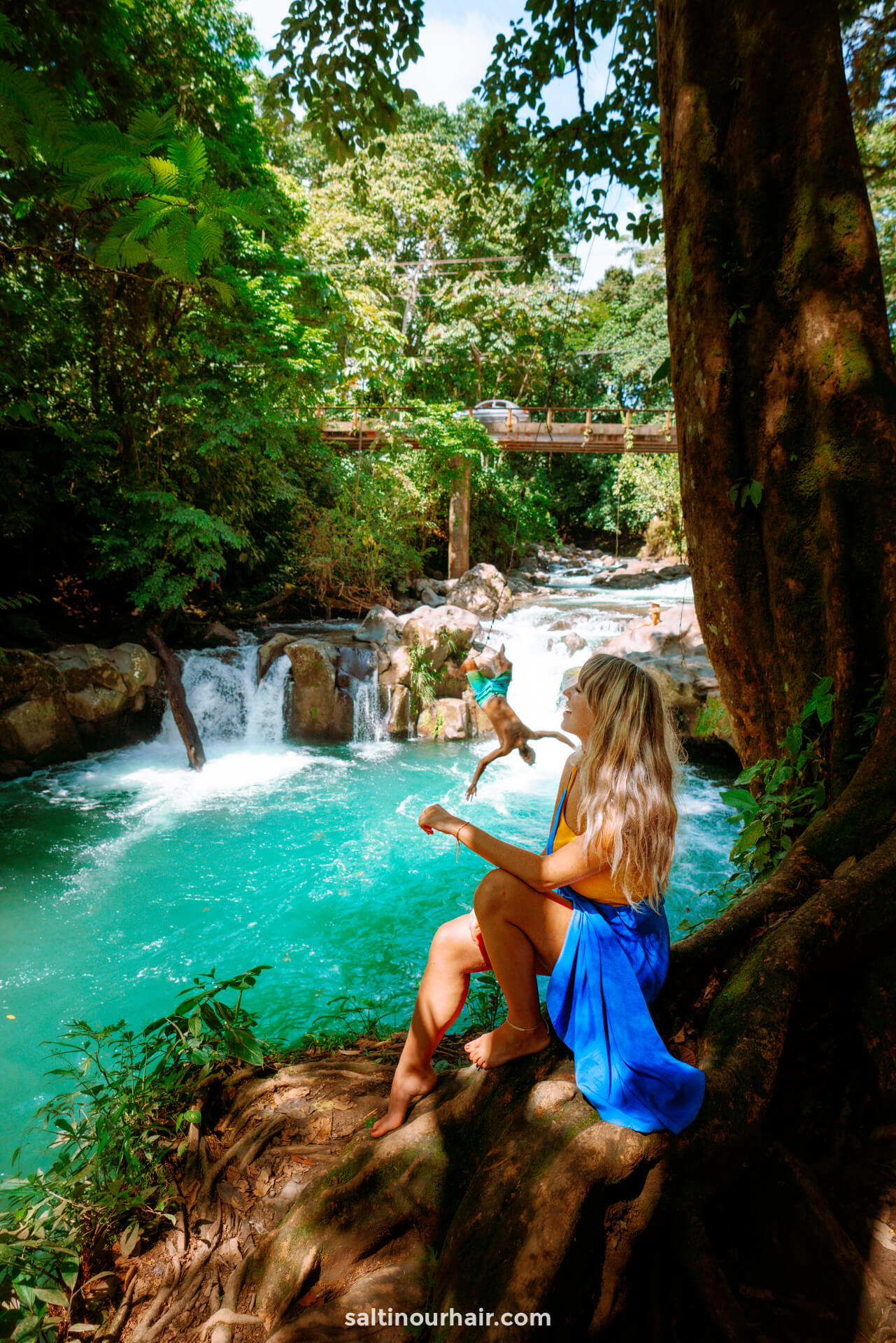
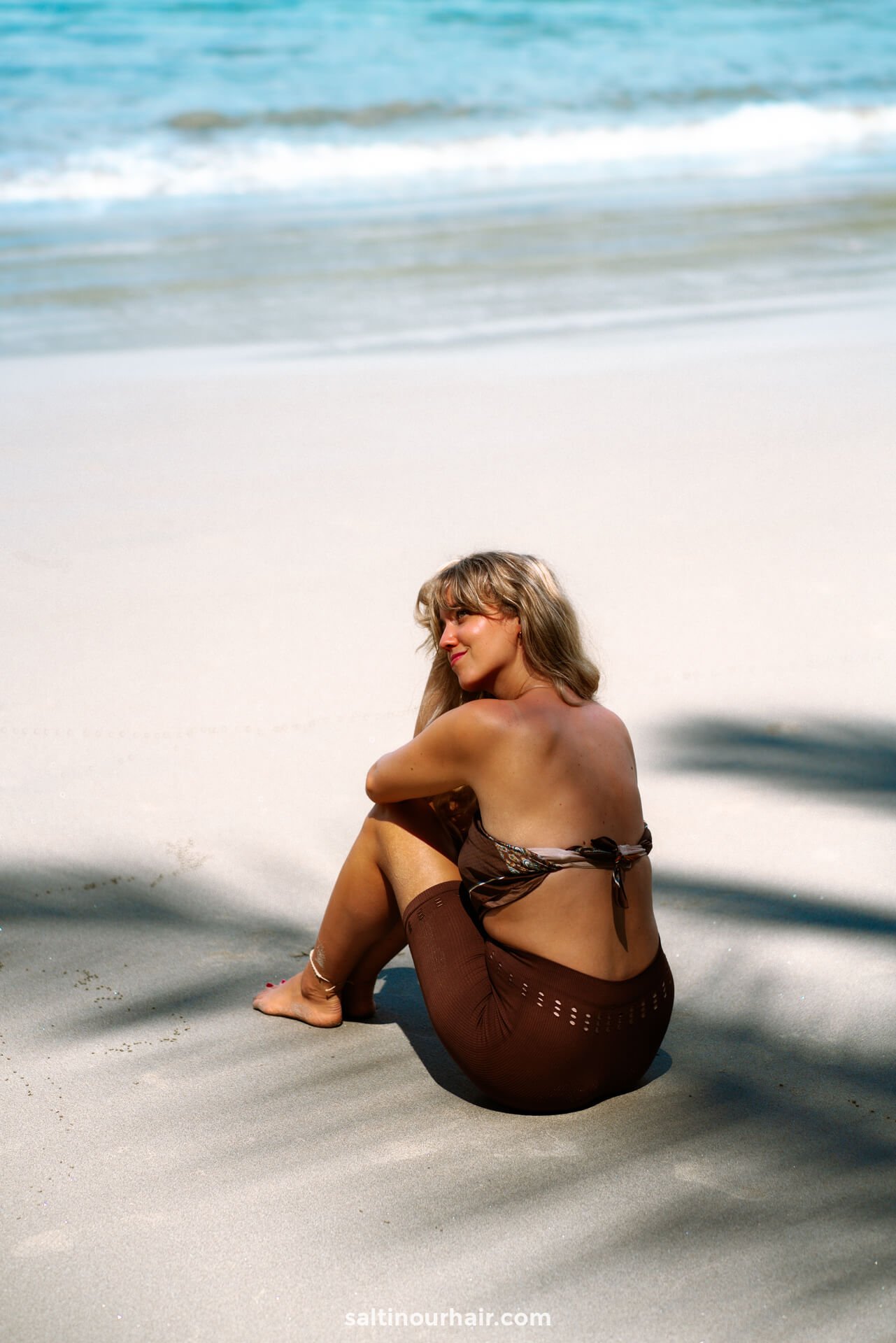
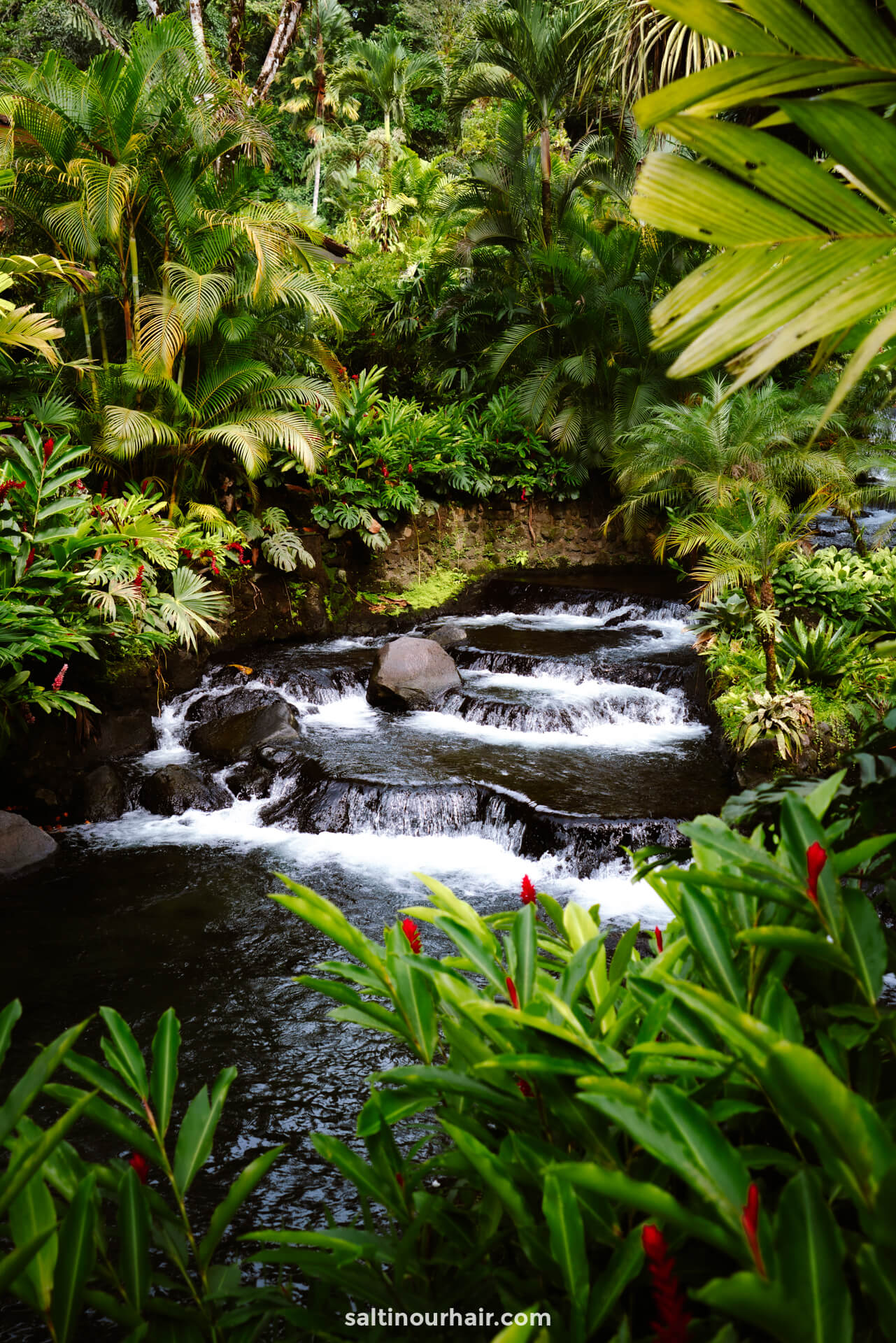


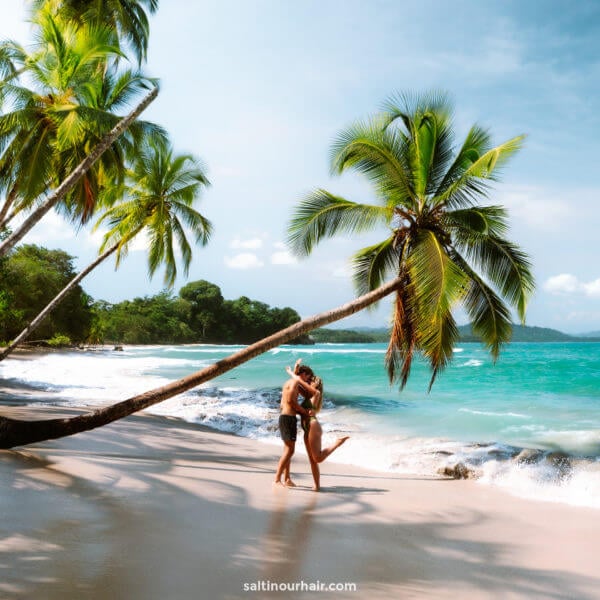

Best Costa Rica itinerary I have seen so far! I plan on following it for a trip in December. Curious if you think there would be any drawbacks to doing this itinerary backward? I’d like to do budget stays in Manuel Antonio and Monteverde, but am thinking of a nicer place in La Fortuna and I’d love to end on that.
Hi Lindsey, thank you! Changing your travel direction shouldn’t have any impact, but it’s worth checking public transport schedules if you plan to use those. Have an amazing trip!